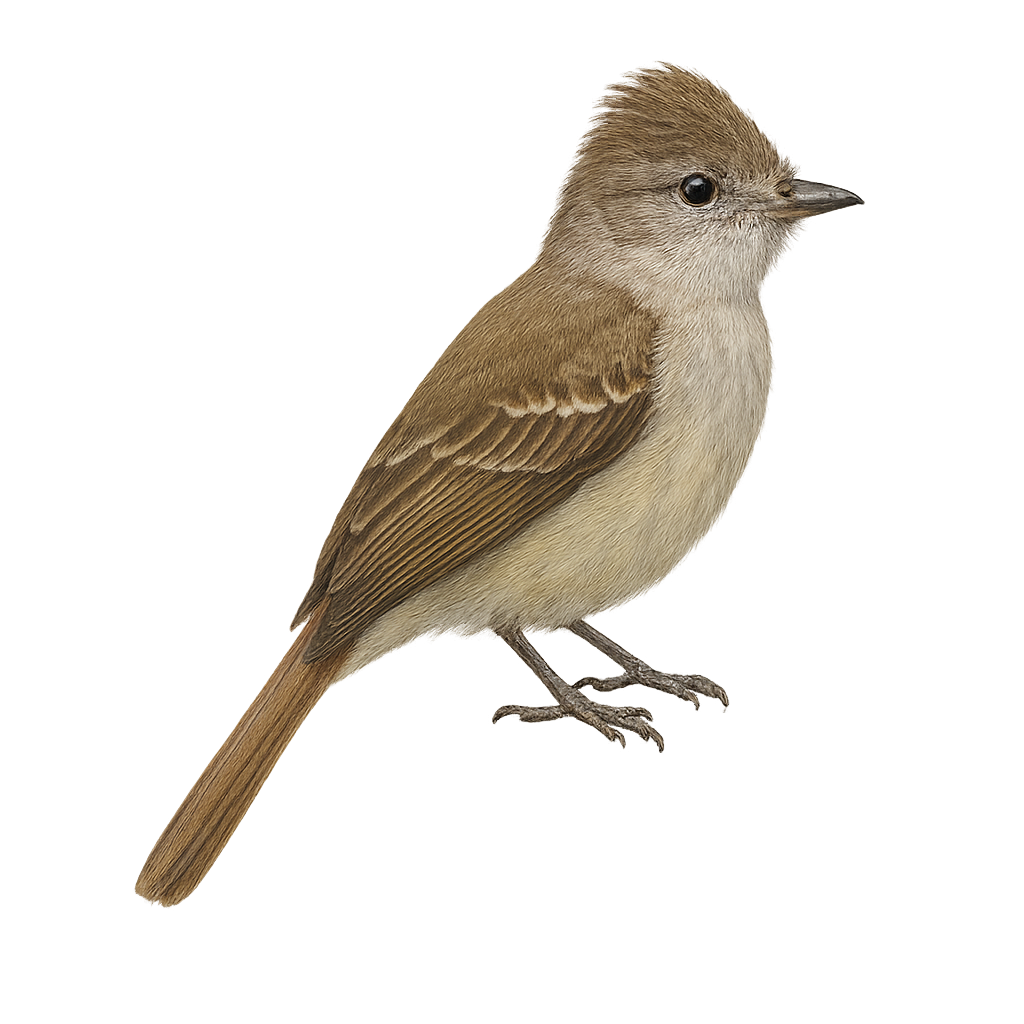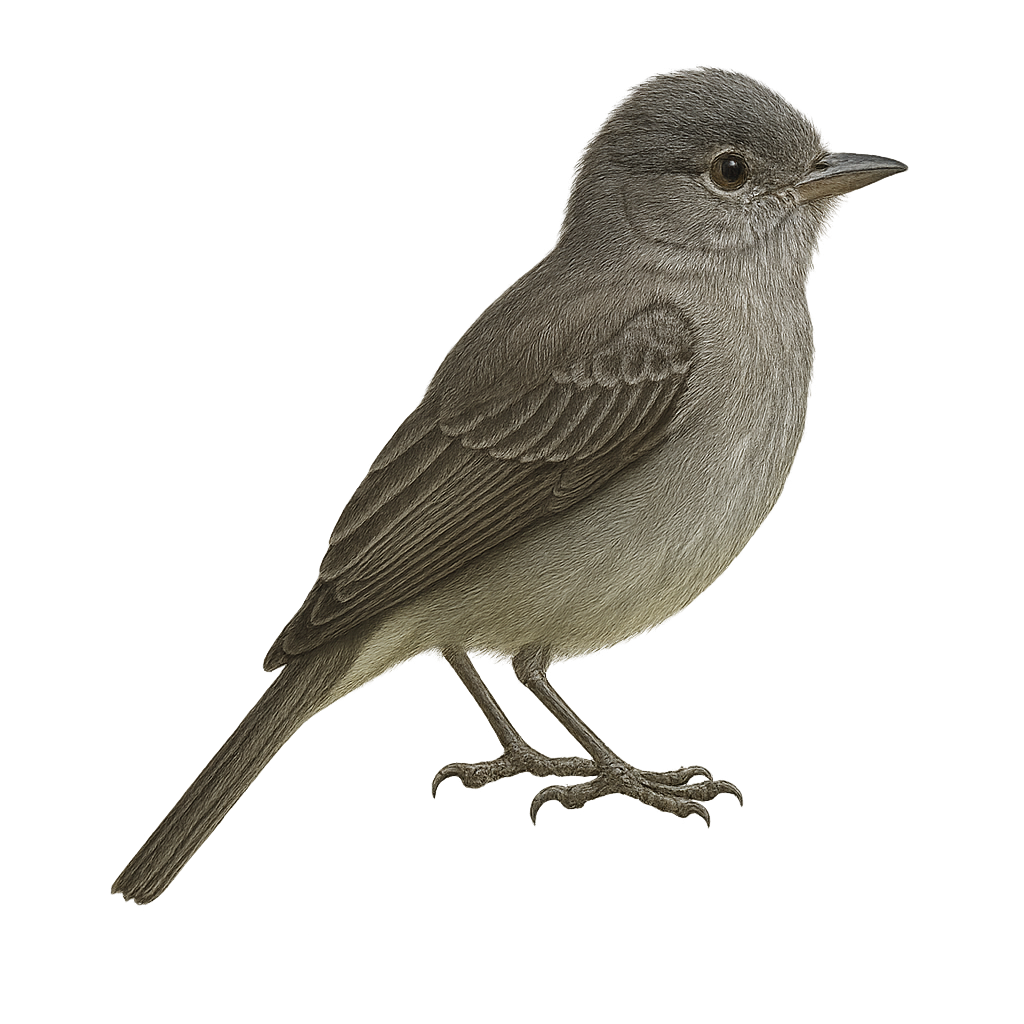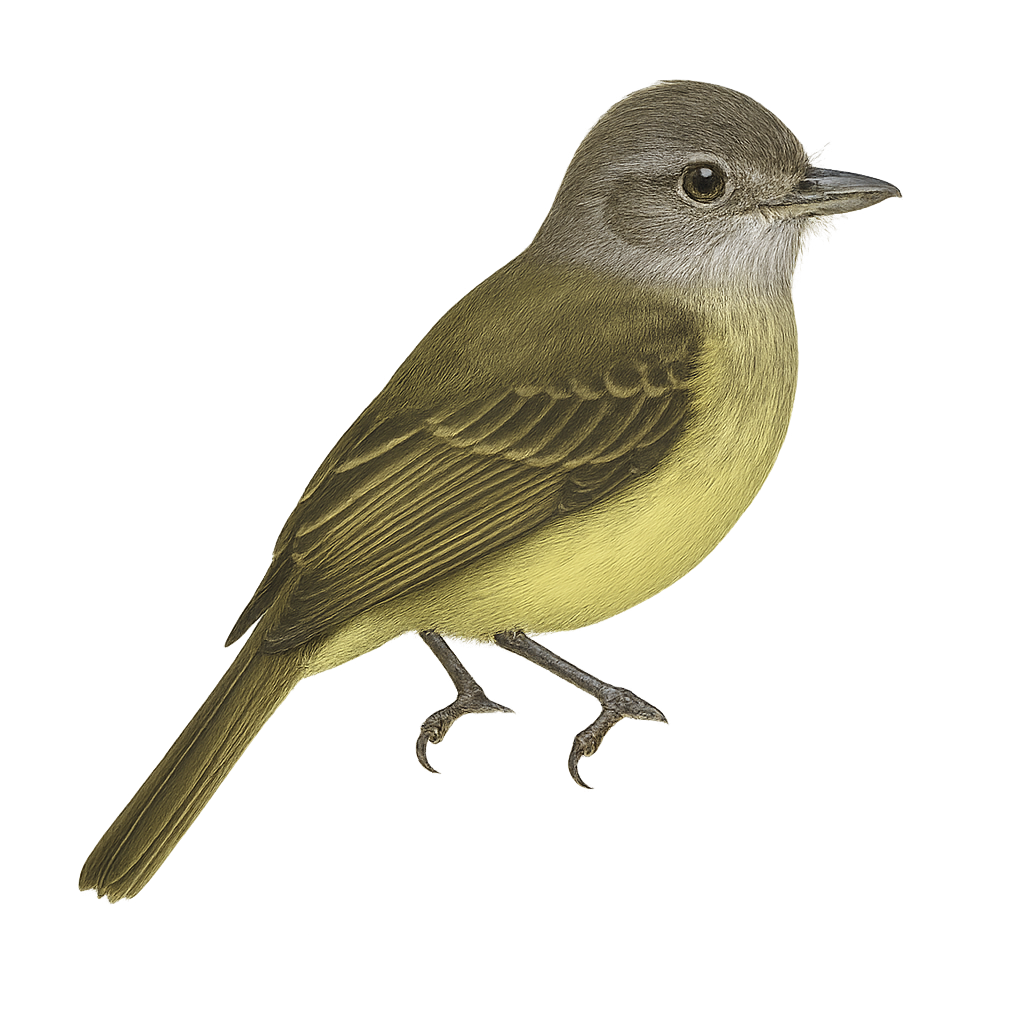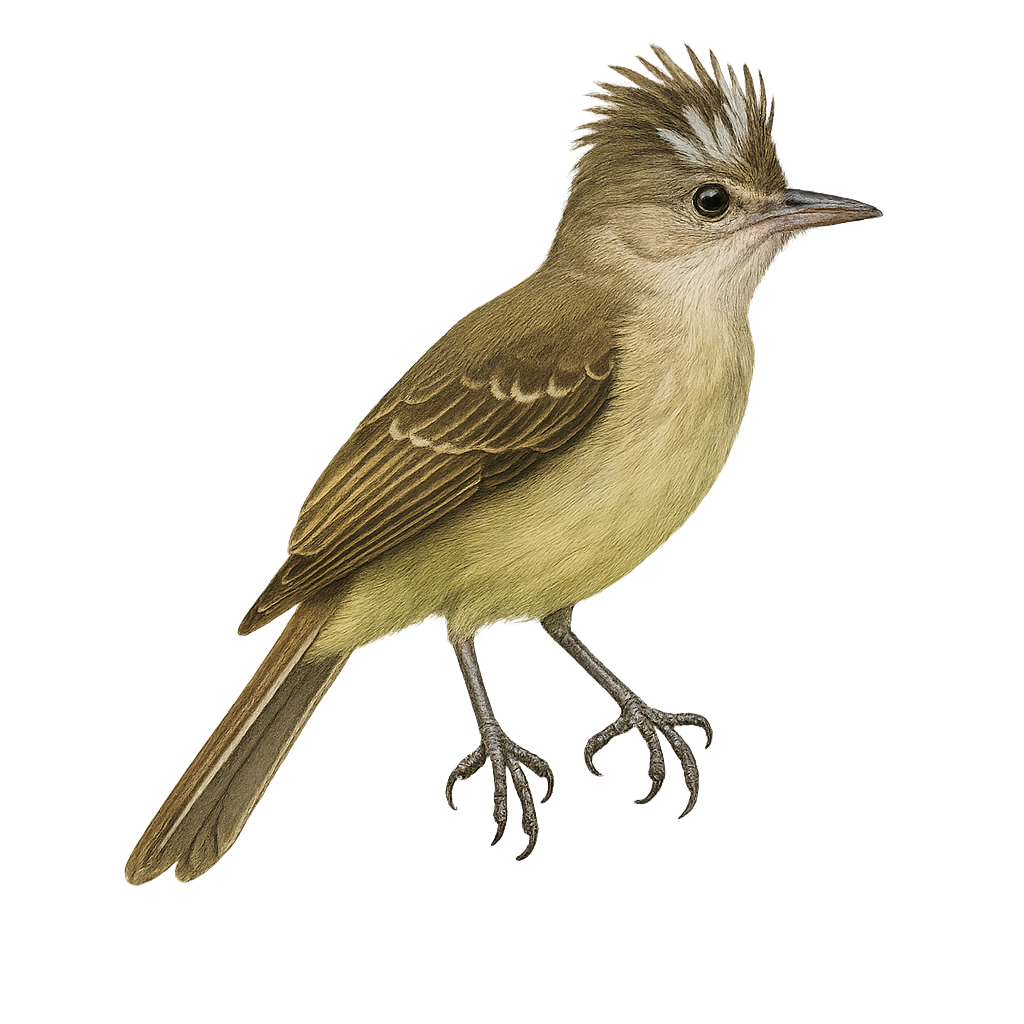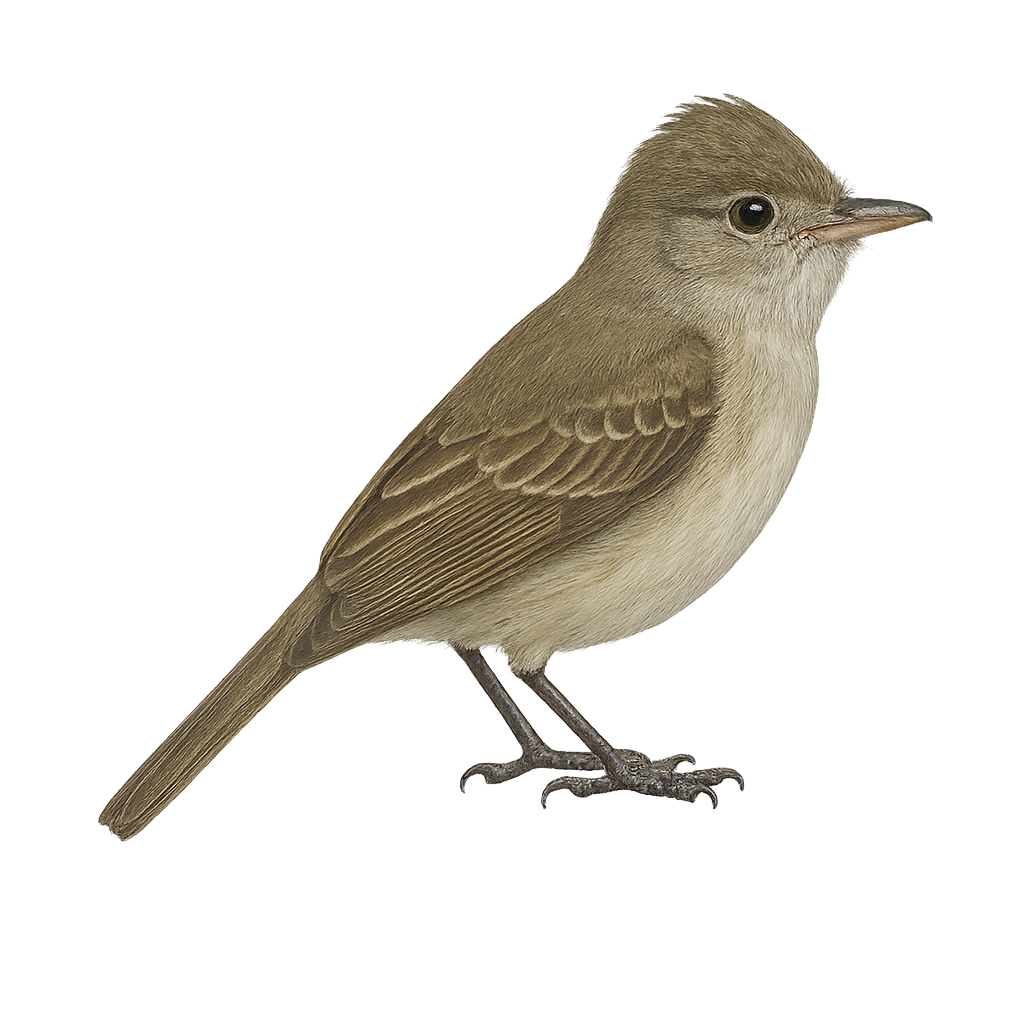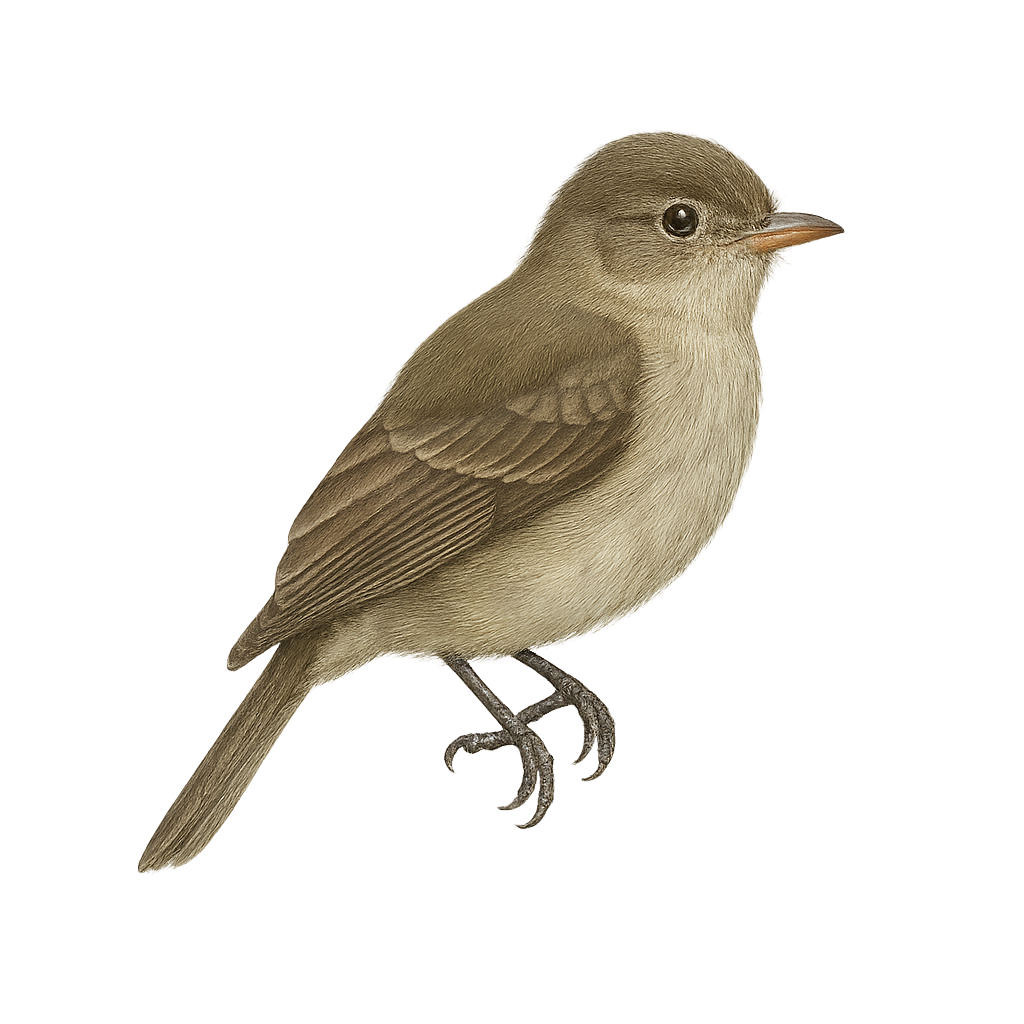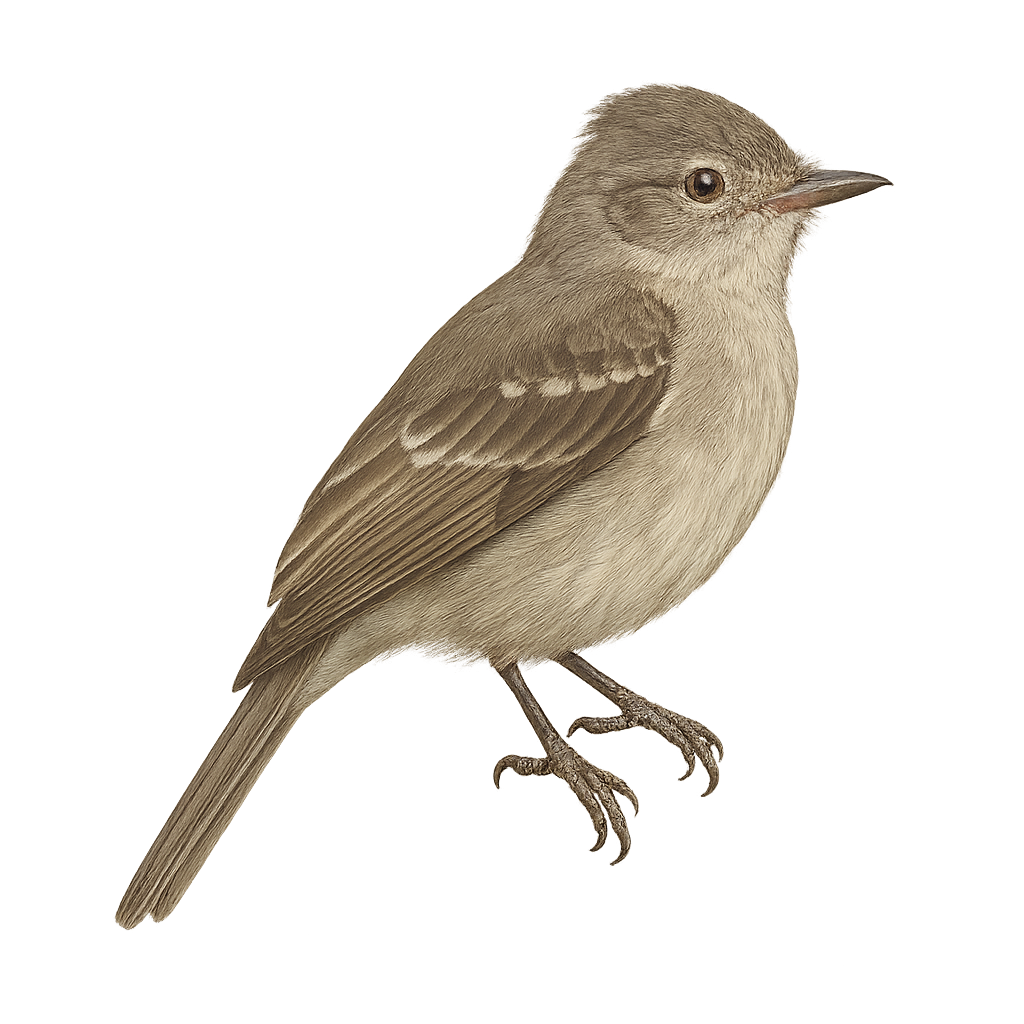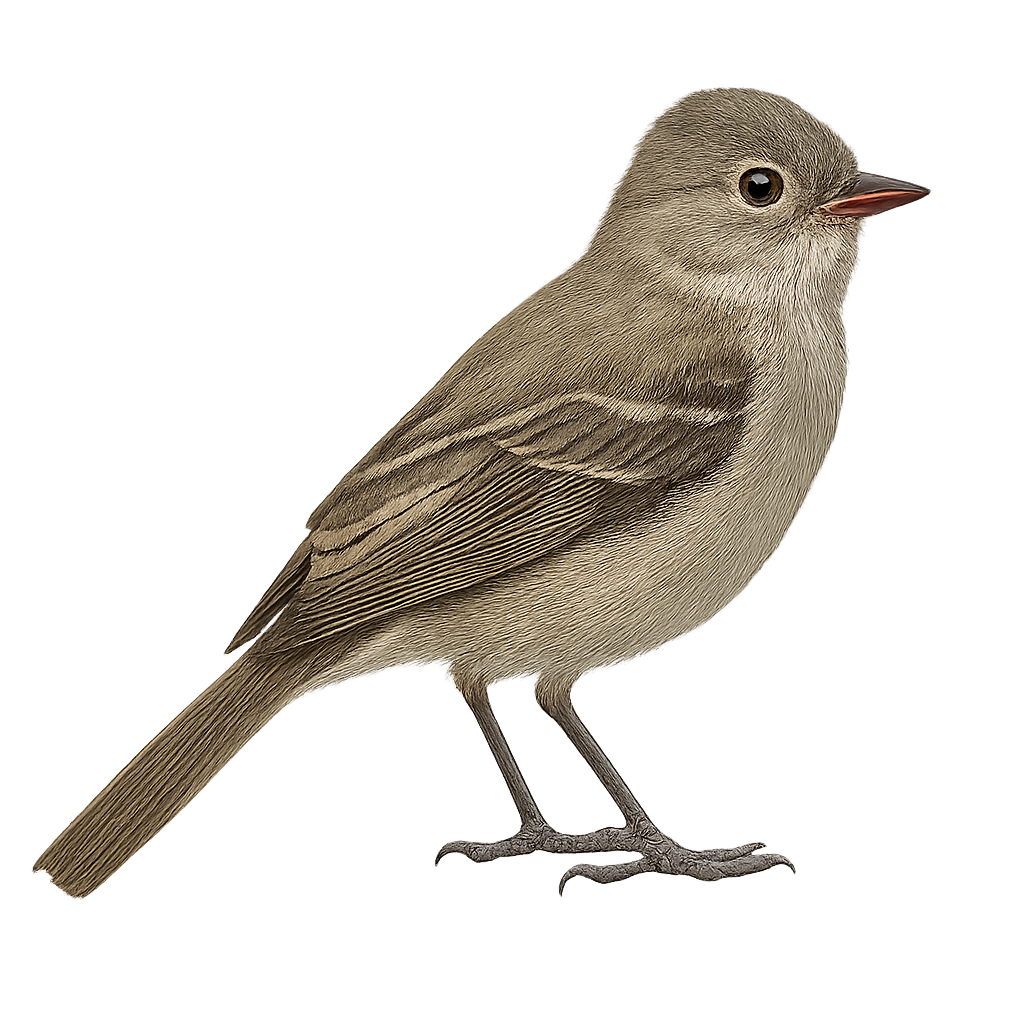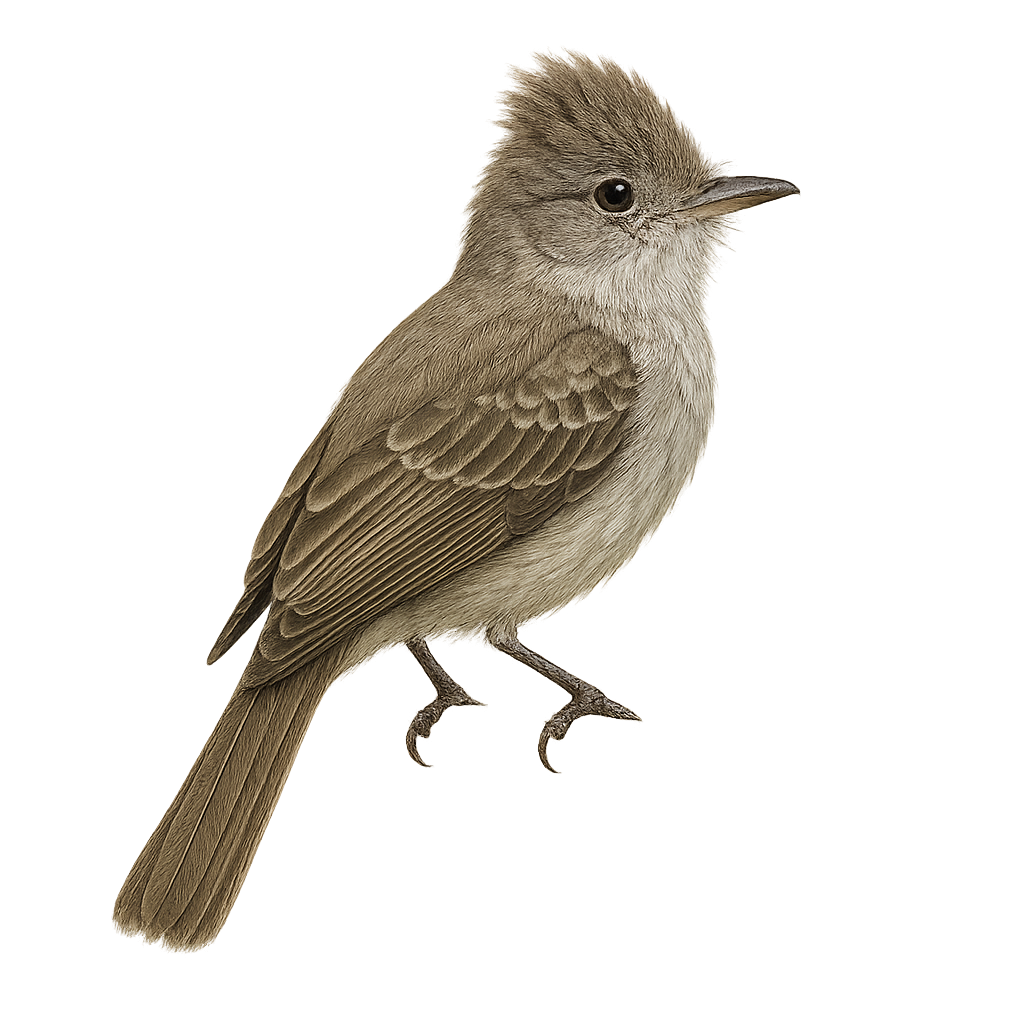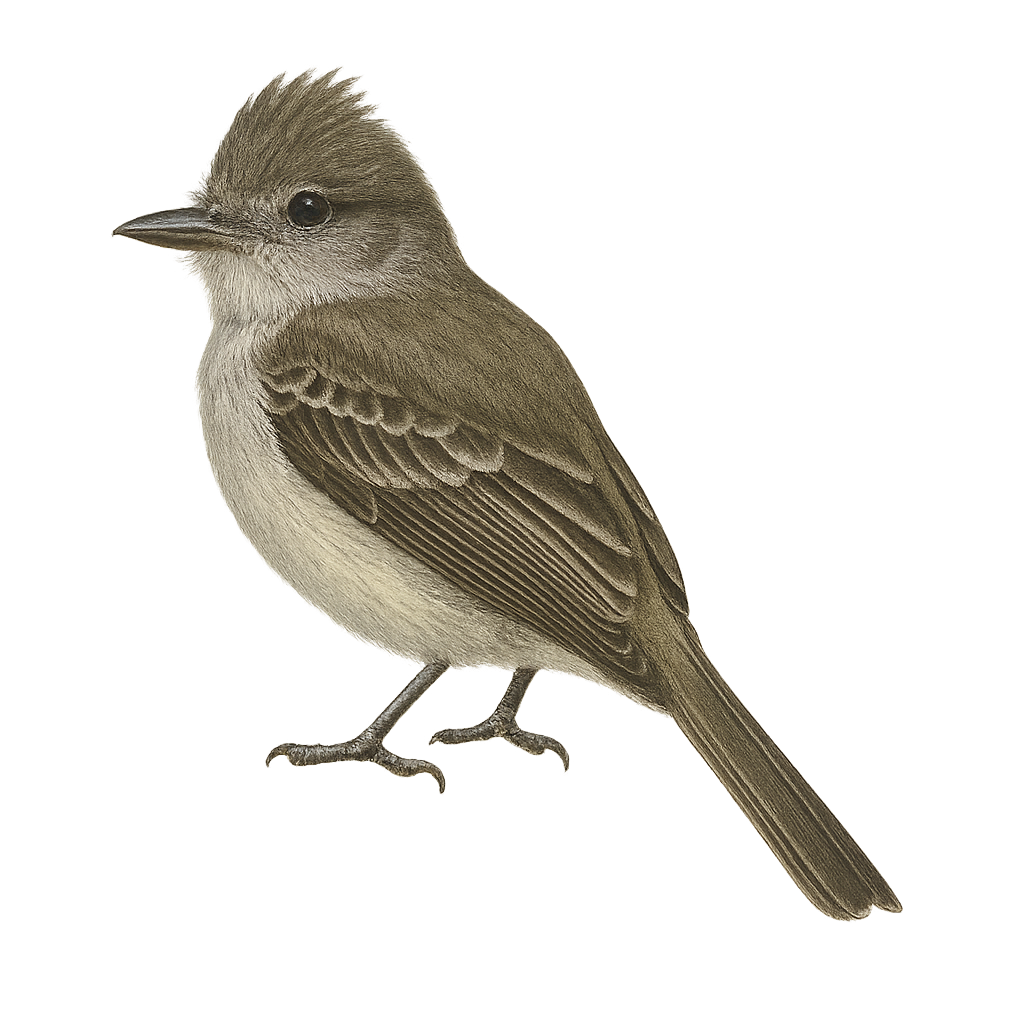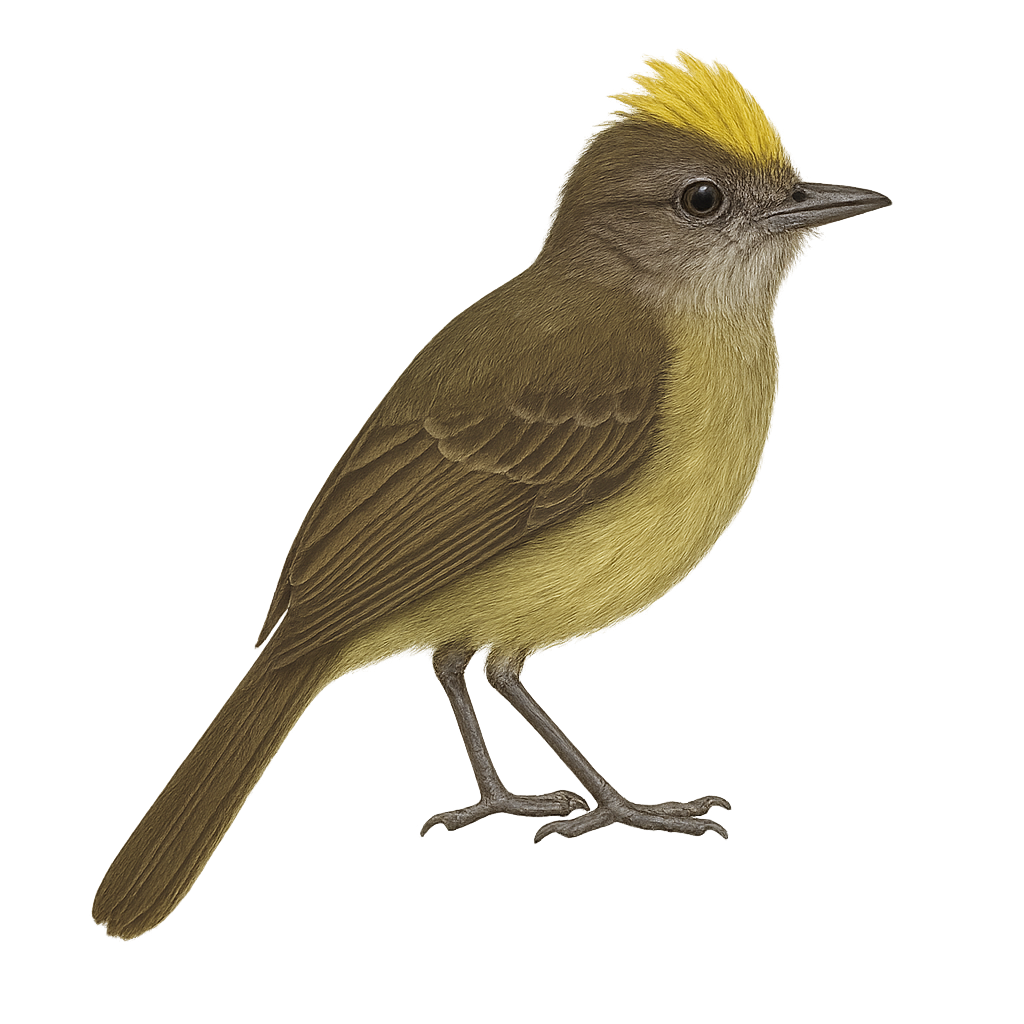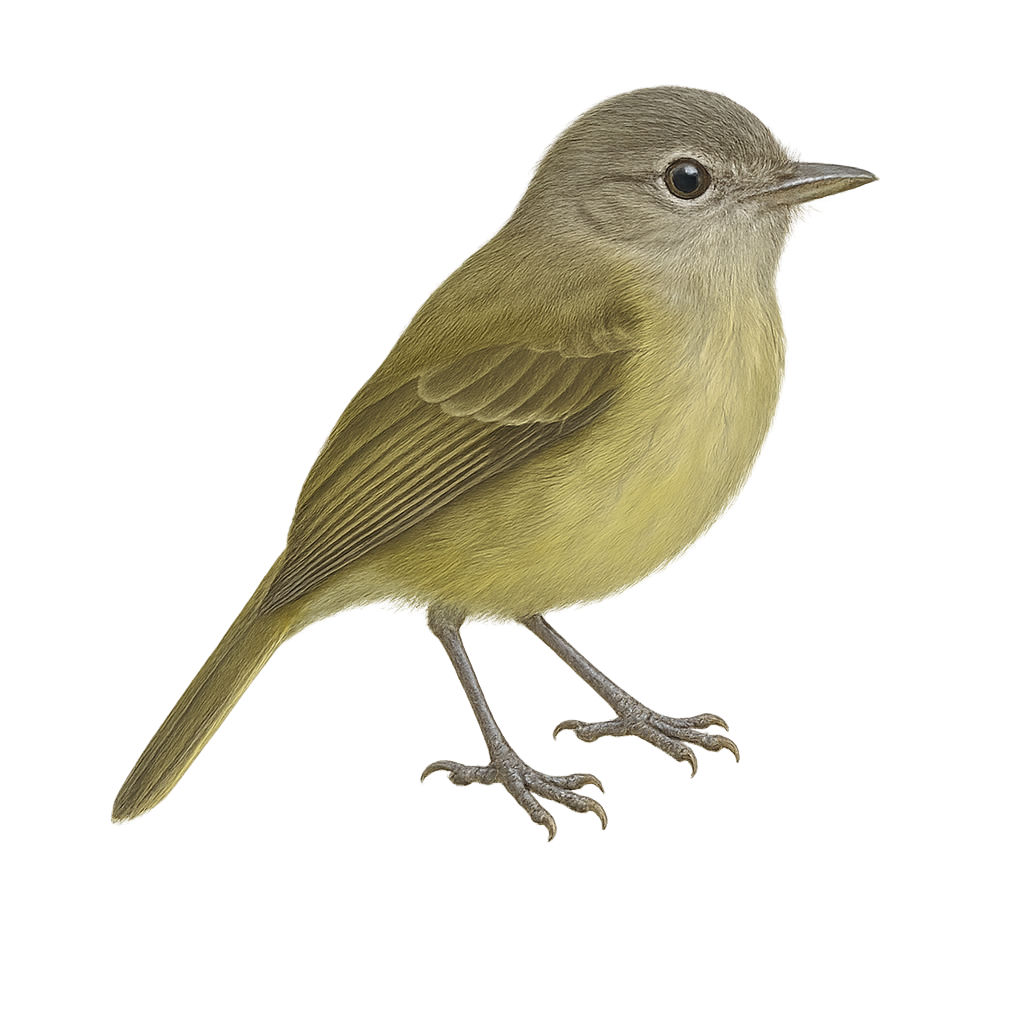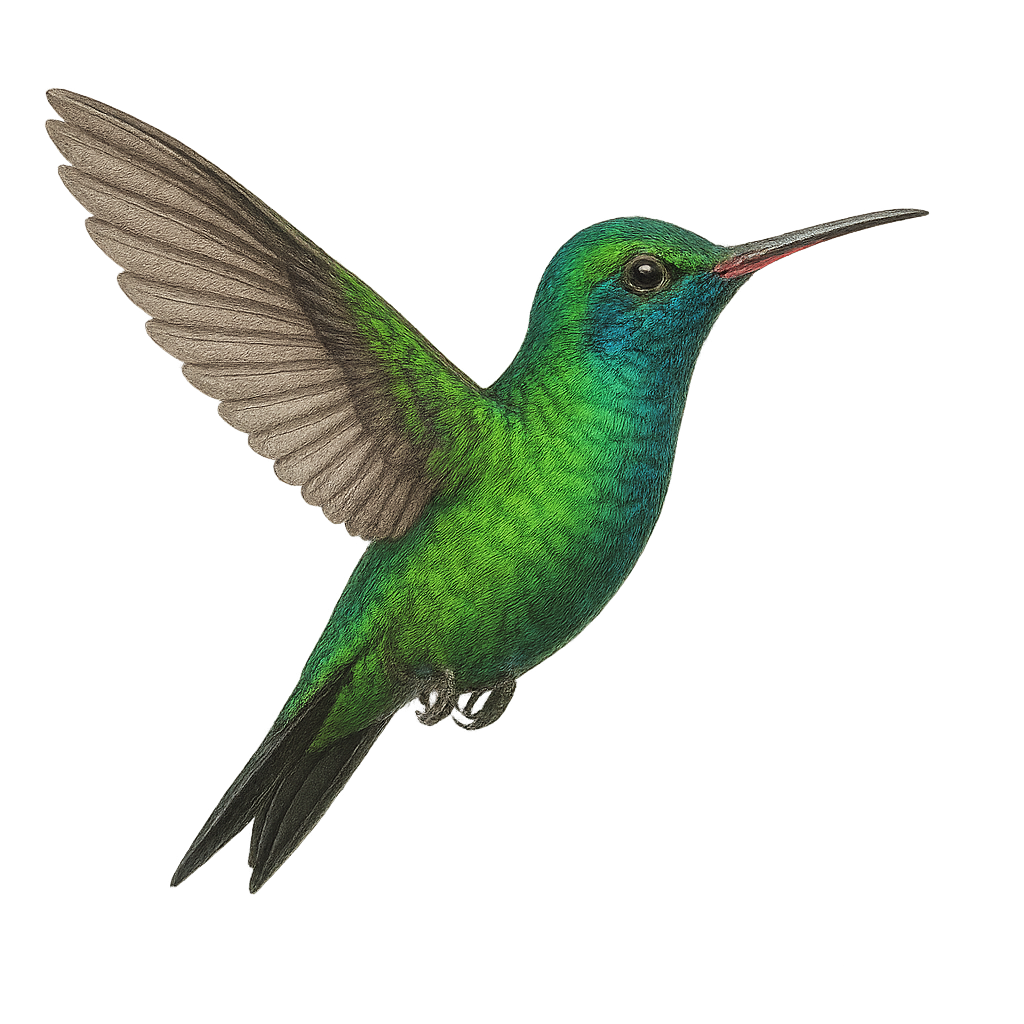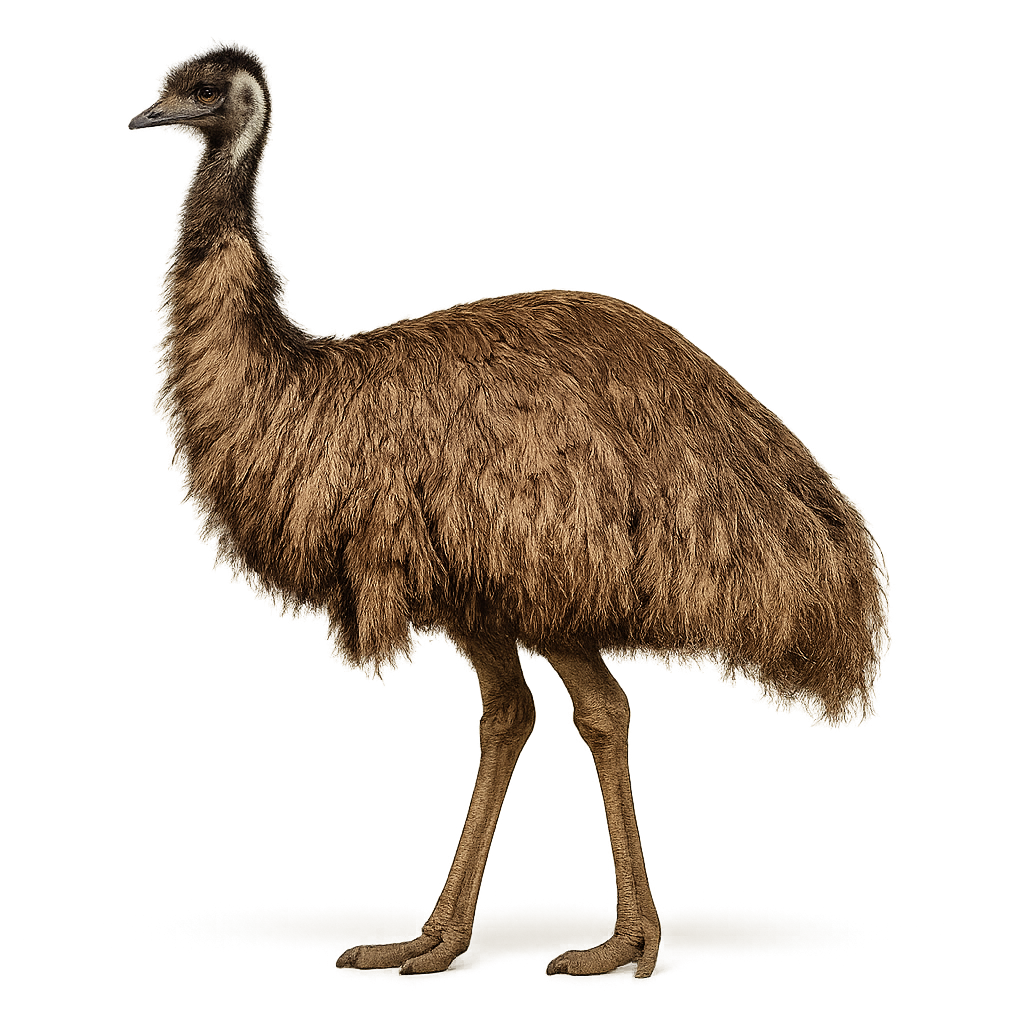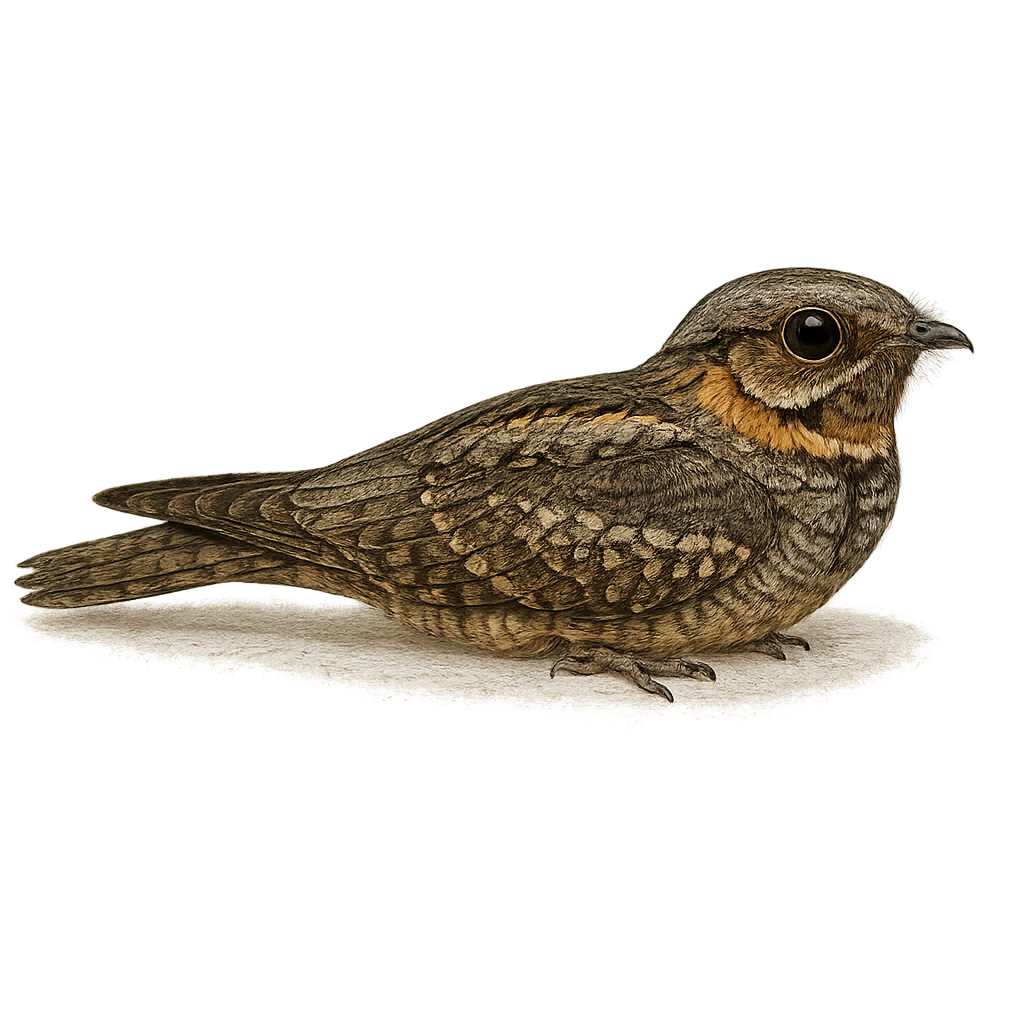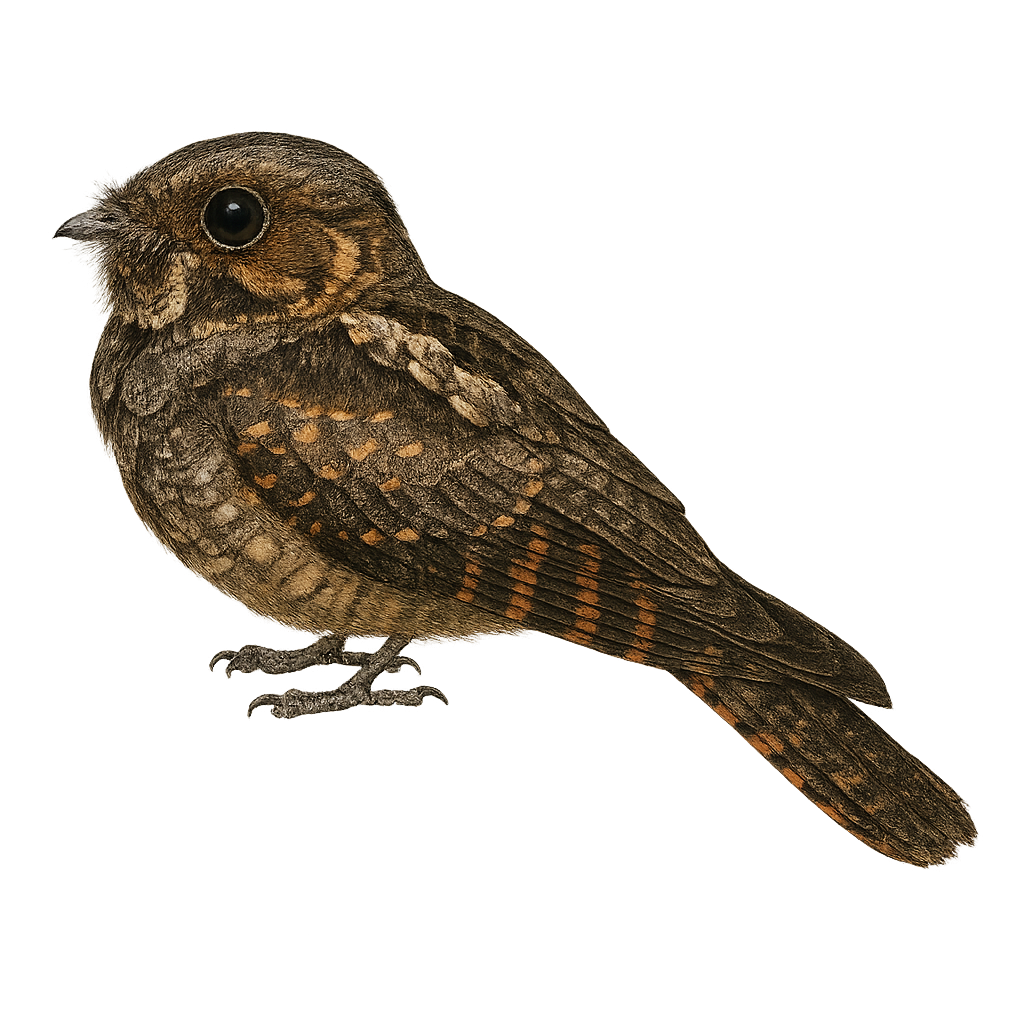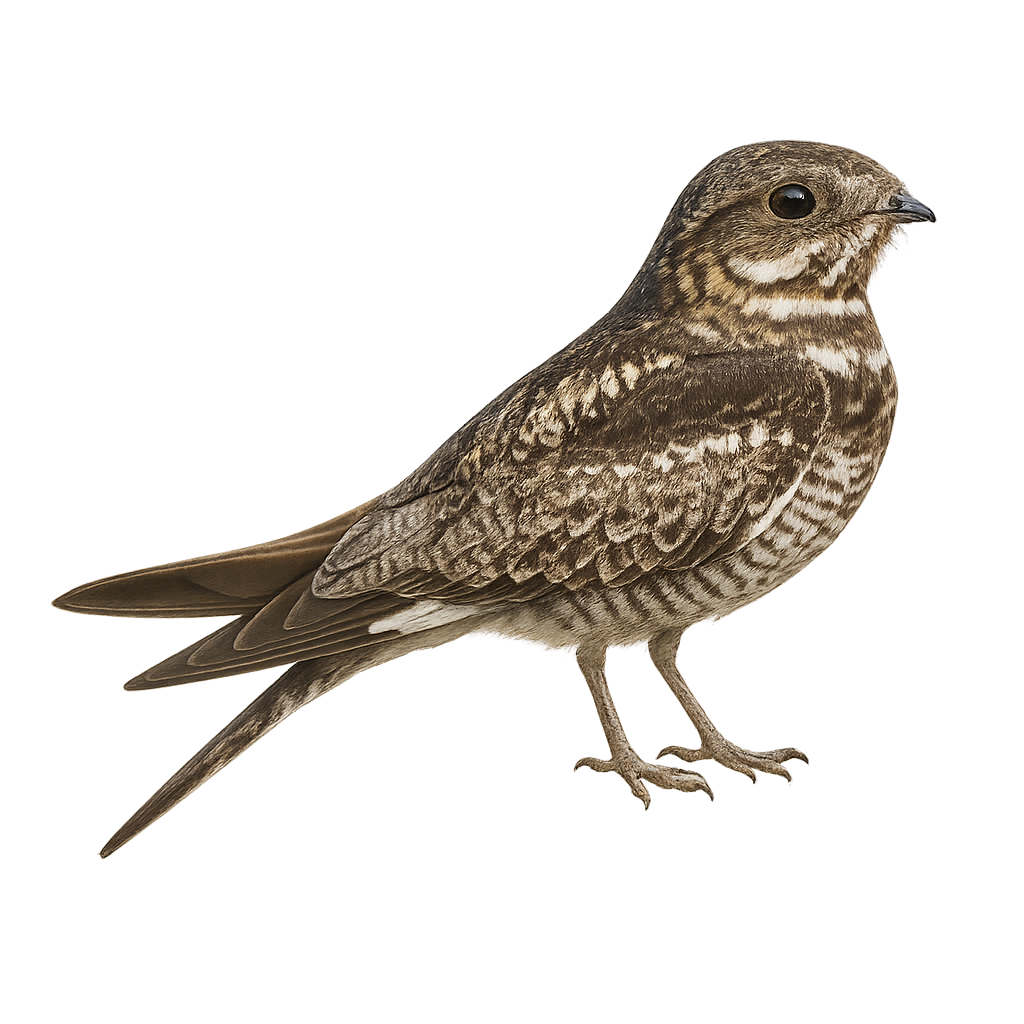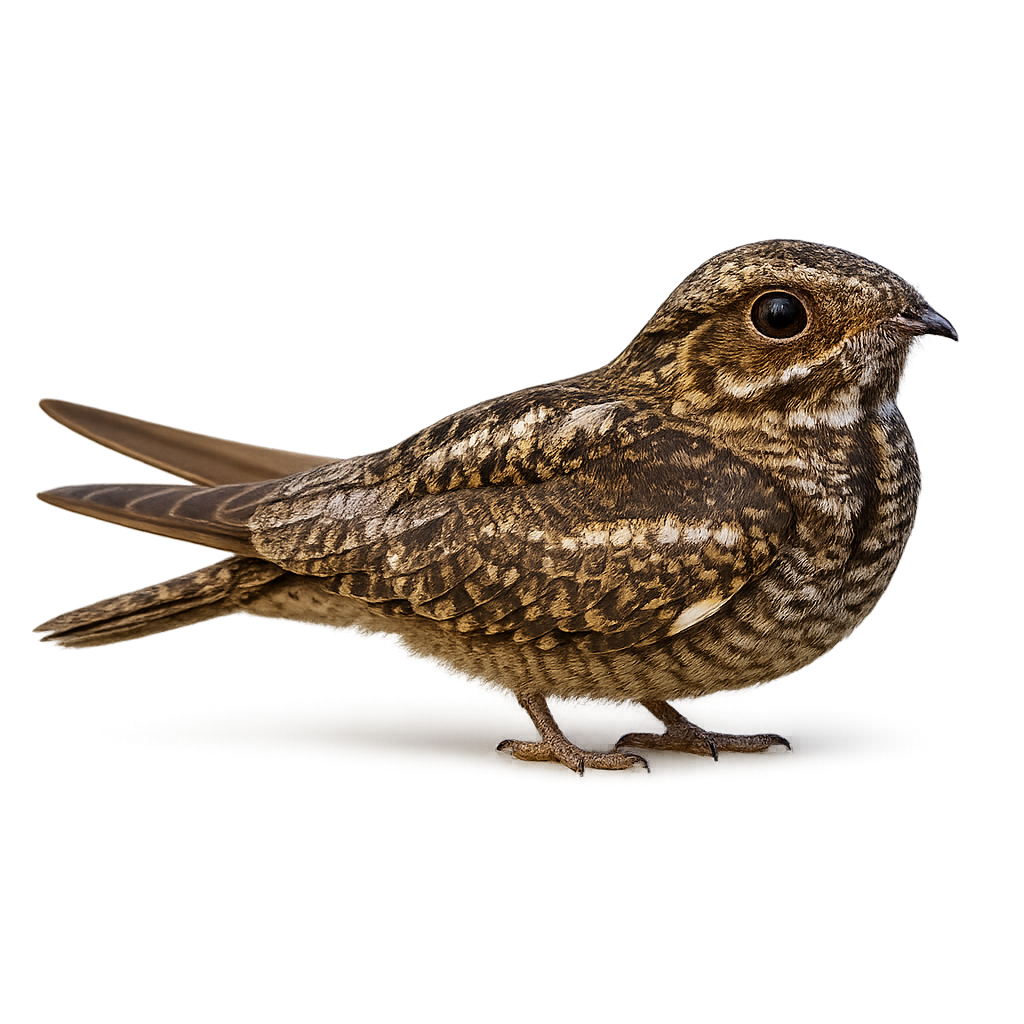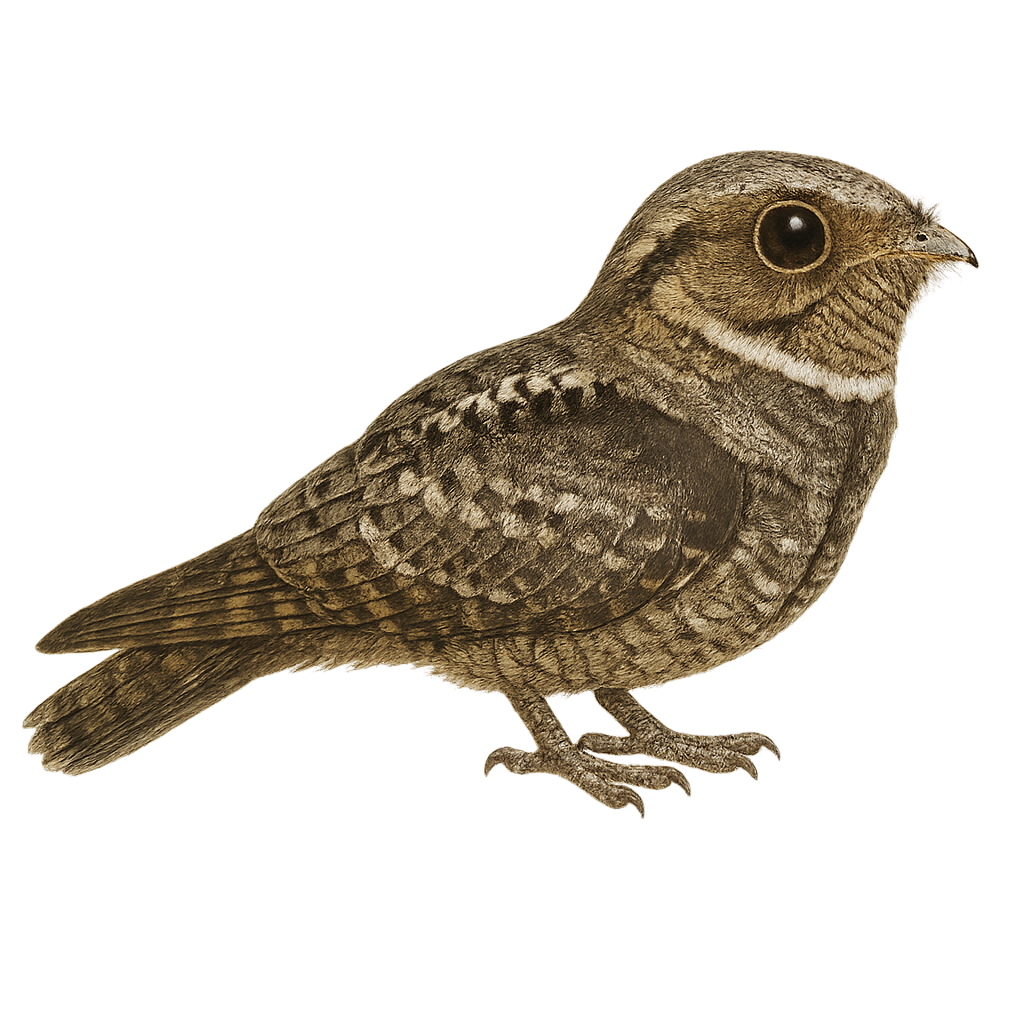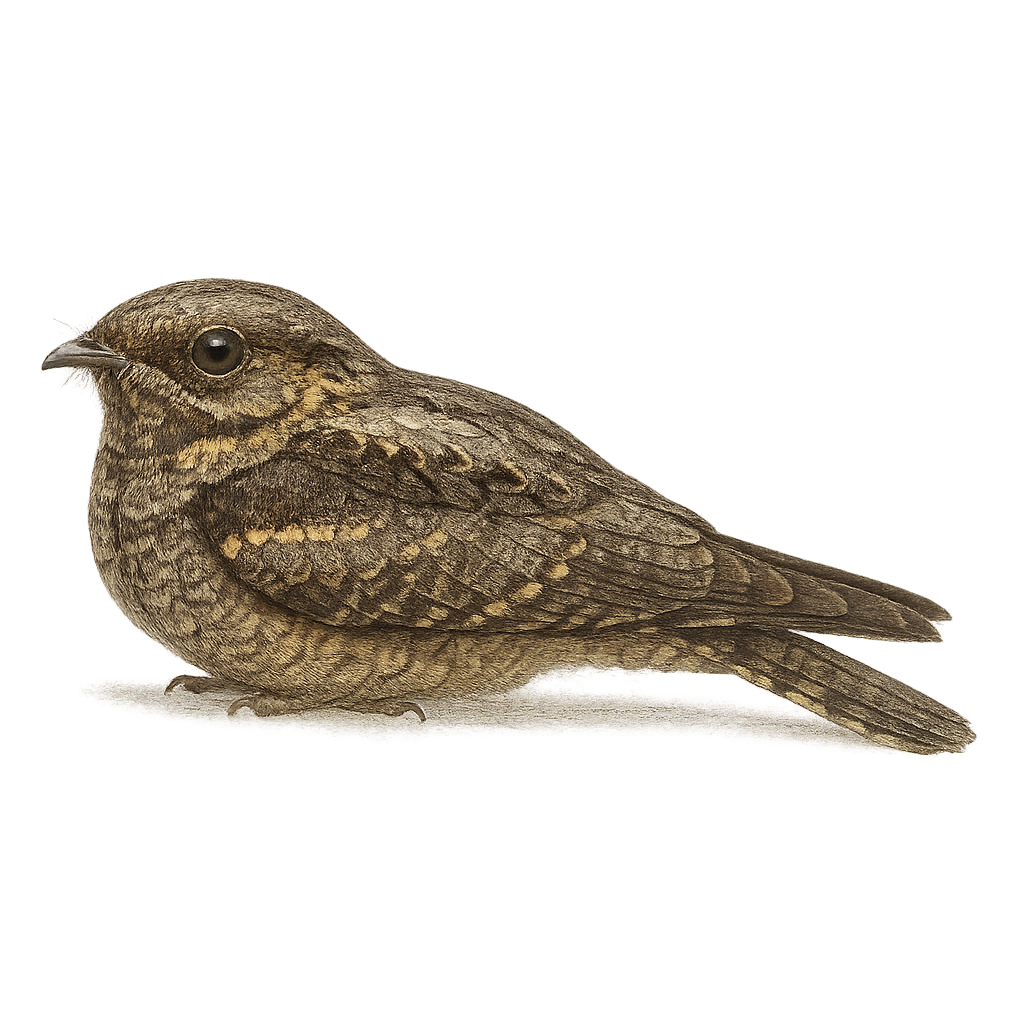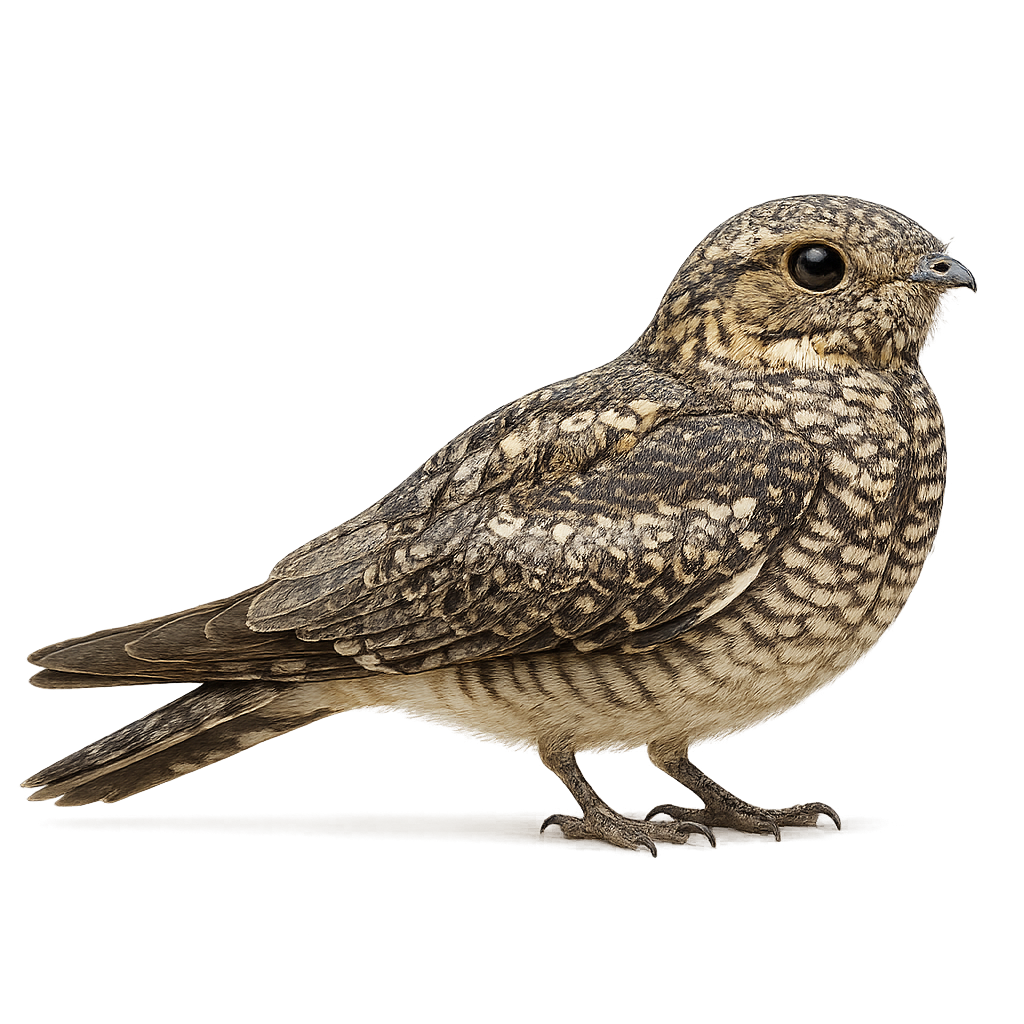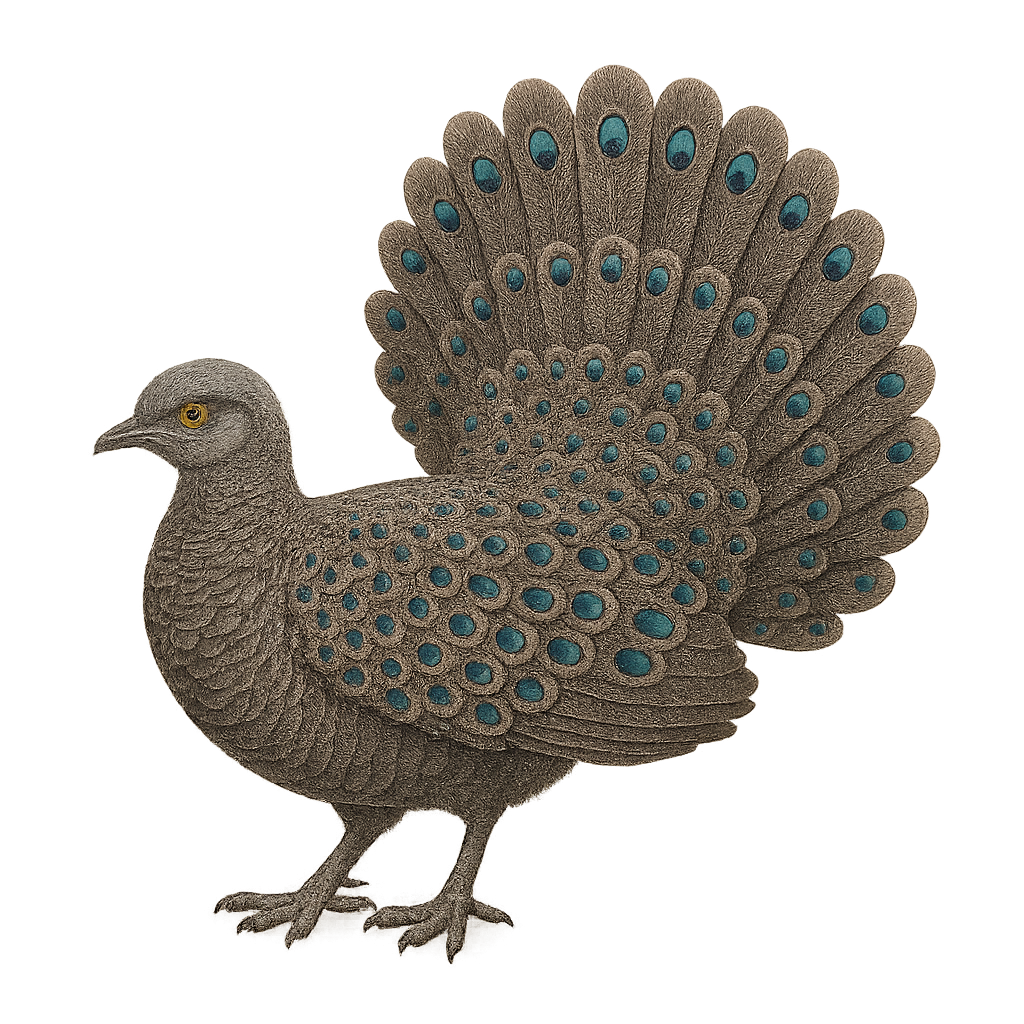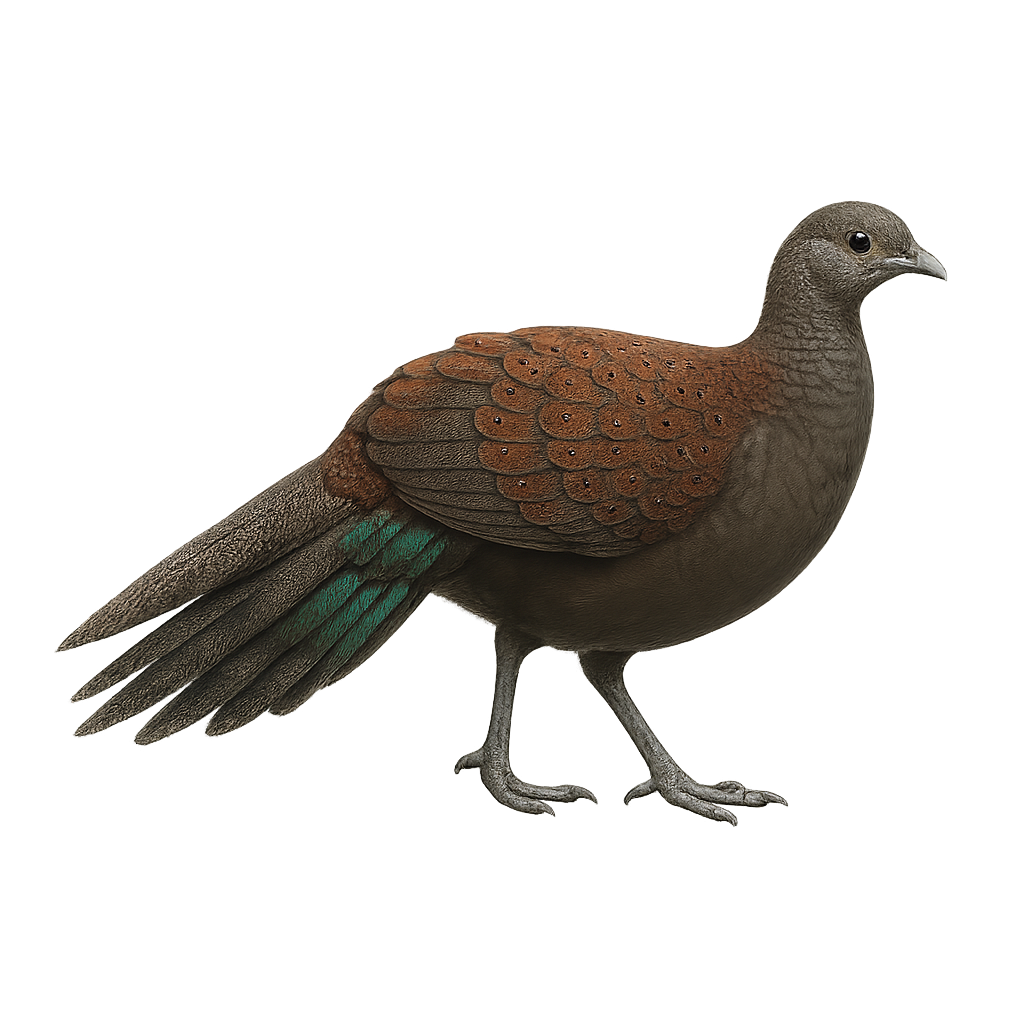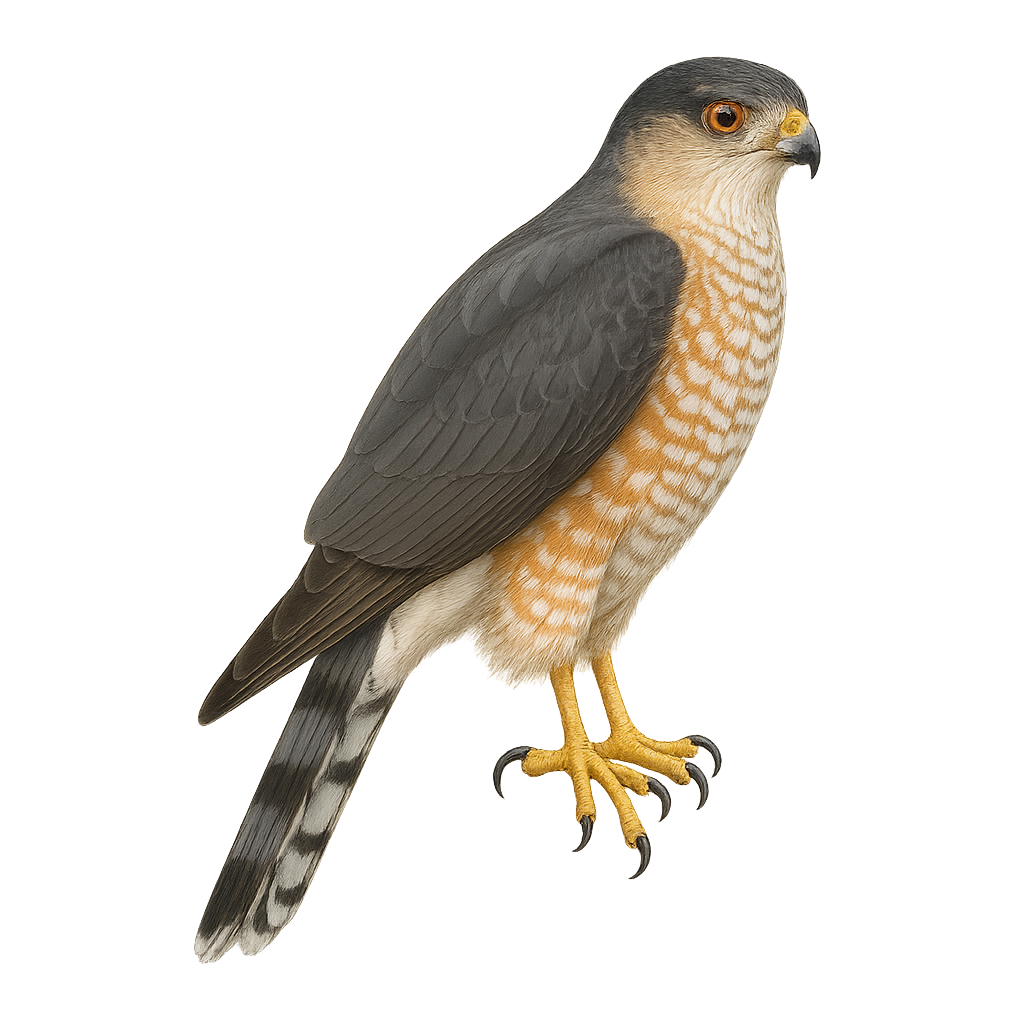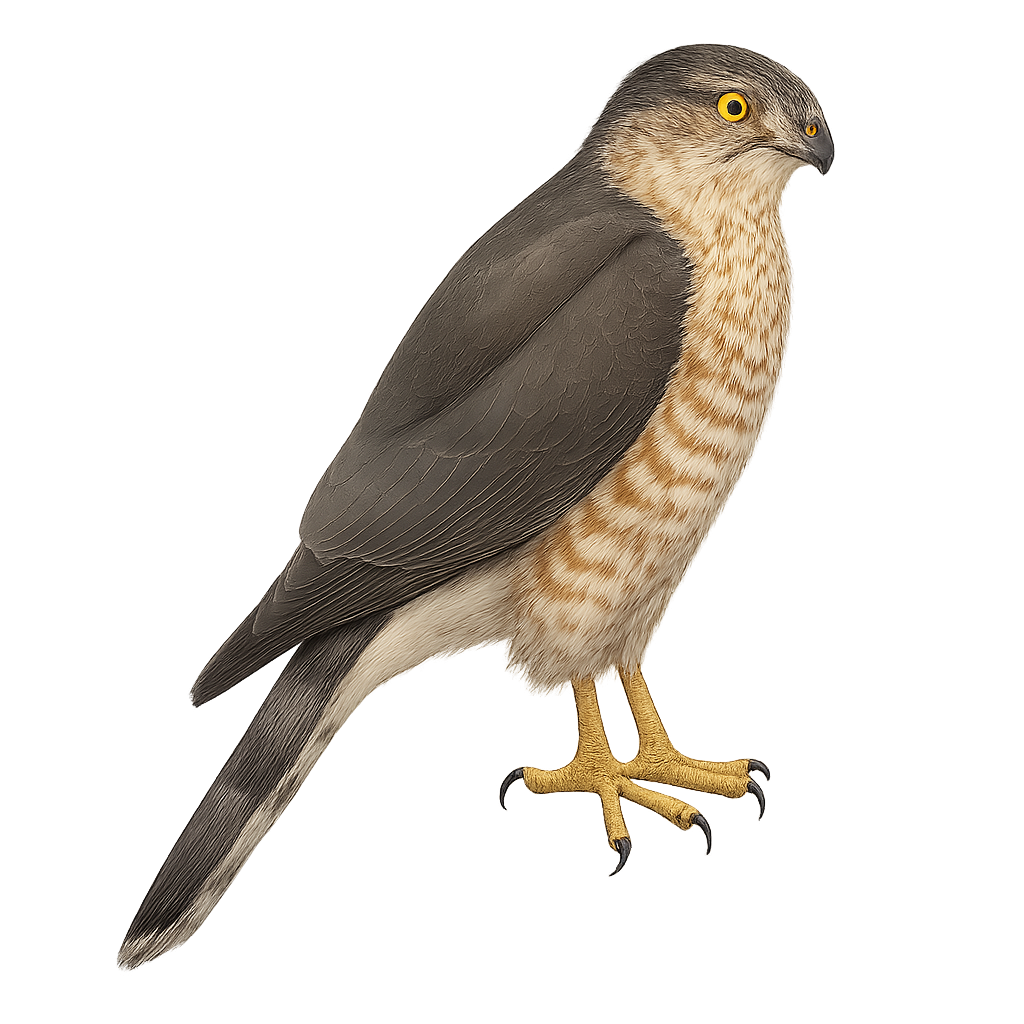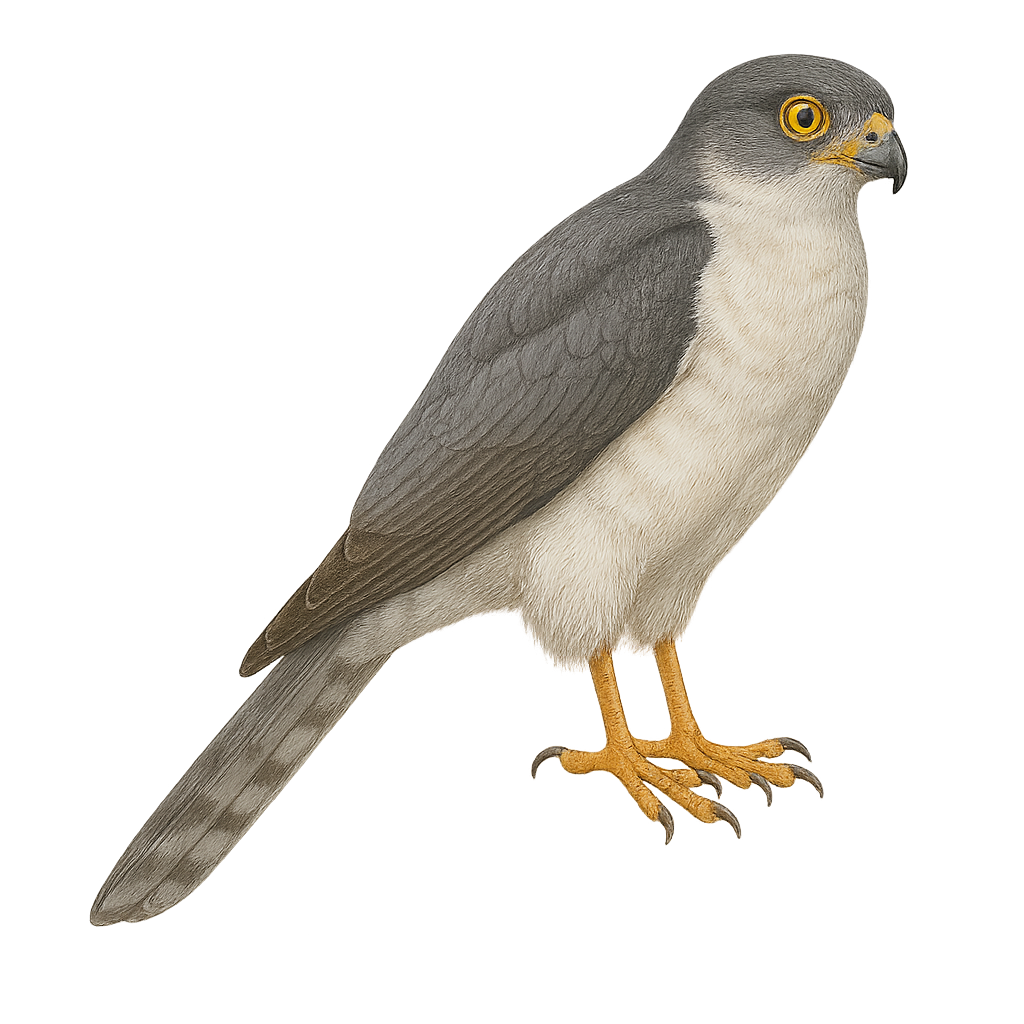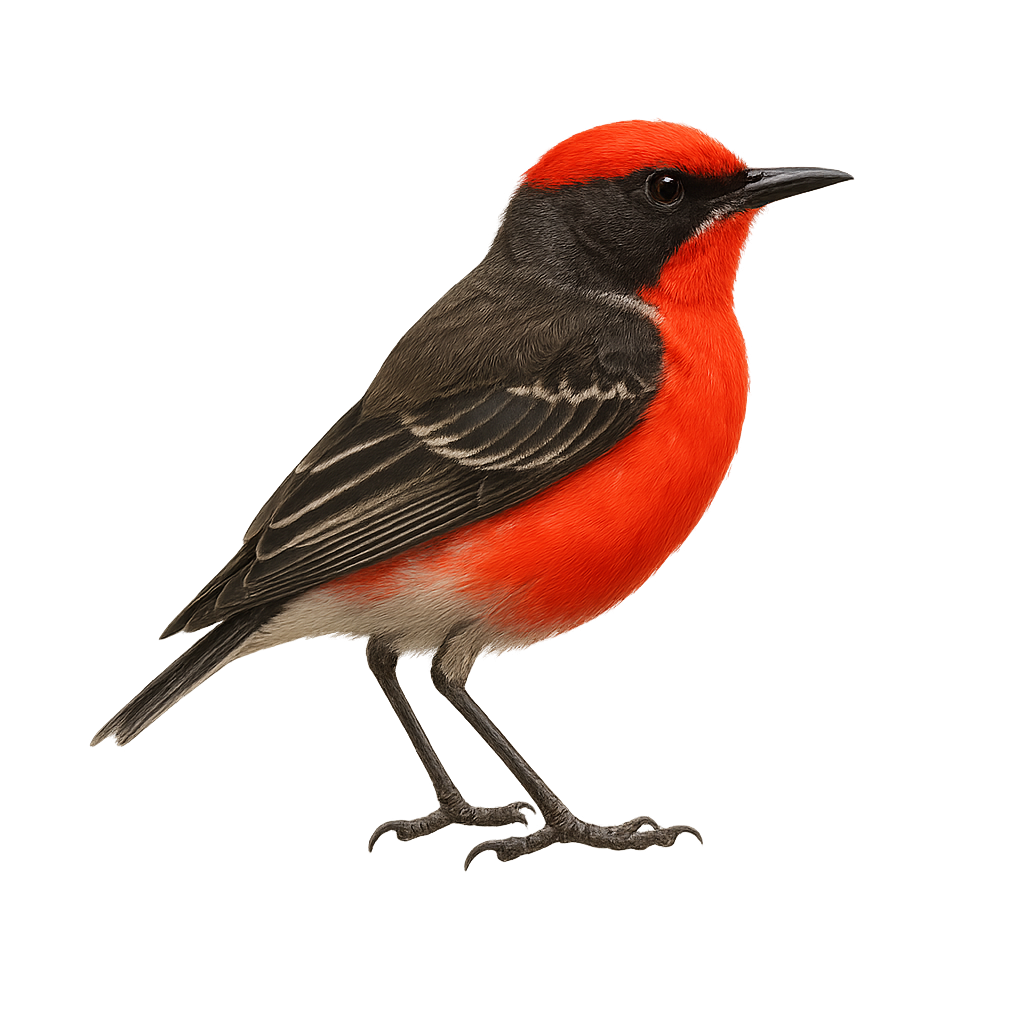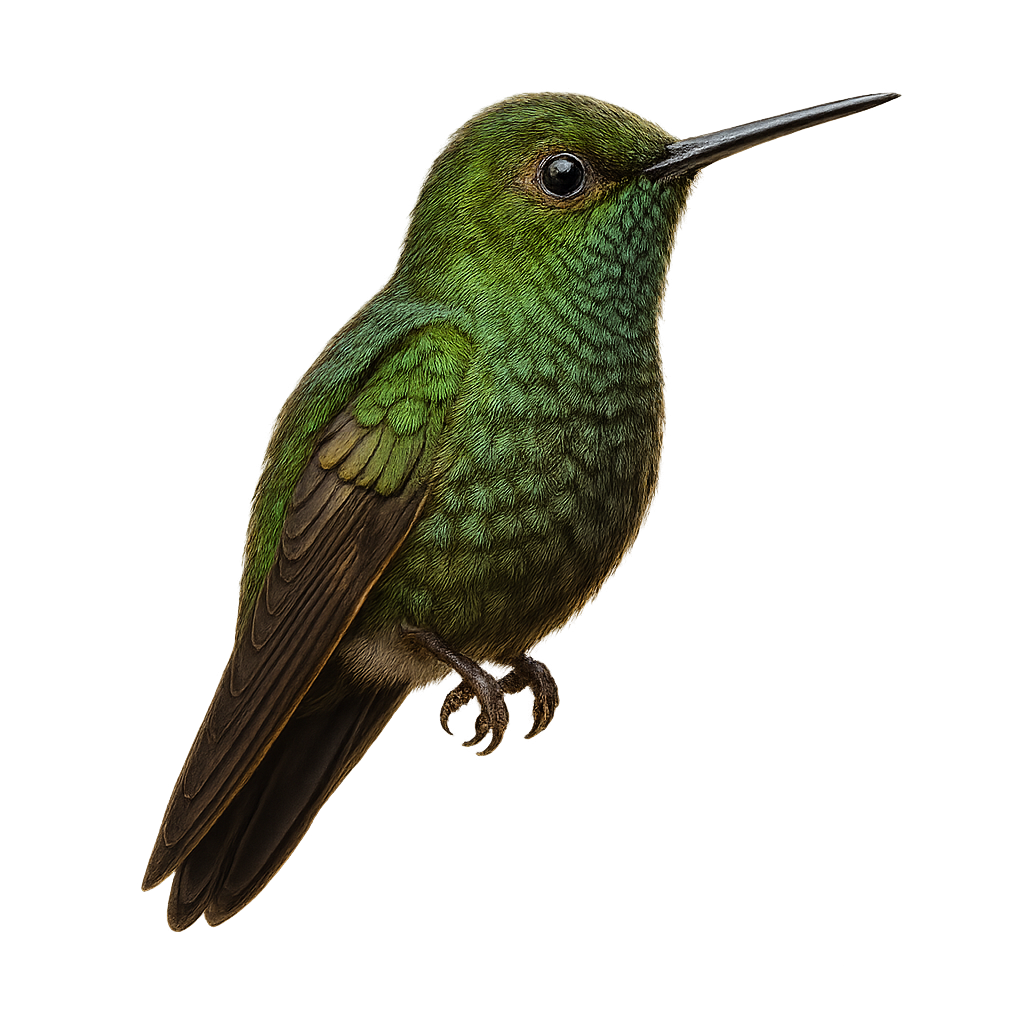The Pelzeln's Elaenia is a small passerine bird belonging to the Tyrannidae family. It is primarily found in the tropical and subtropical humid forests of South America, particularly in Brazil, Colombia, and Venezuela. This bird is characterized by its olive-green plumage on the back and lighter underparts, with a subtle crest on its head. It is often seen feeding on insects and fruits in the canopy. Although its song is discreet, it plays an important role in communication between individuals. The Pelzeln's Elaenia is not very shy, making it easier for birdwatchers to observe.
The Highland Elaenia is a small passerine bird belonging to the Tyrannidae family. It is primarily found in the mountainous regions of South America, particularly in Colombia, Venezuela, and Ecuador. Its plumage is generally dull, with shades of gray and brown, allowing it to blend into its natural environment. This bird is often identified by its distinctive song, a melodious whistle that echoes through cloud forests and wooded areas. Although discreet, the Highland Elaenia plays a crucial role in the ecosystem by aiding in seed dispersal and insect population control.
The Greenish Elaenia, Myiopagis gaimardii, is a small passerine bird belonging to the Tyrannidae family. It is primarily found in the tropical rainforests of Central and South America, where it is distinguished by its olive-green plumage and lighter belly. This bird is often observed alone or in small groups, feeding mainly on insects caught in flight. Its ability to blend into dense foliage sometimes makes it difficult to spot. Although not currently threatened, deforestation poses a potential risk to its natural habitat. The Greenish Elaenia is also known for its distinctive song, which plays a crucial role in communication between individuals, especially during the breeding season.
The Greater Elaenia is a medium-sized bird belonging to the Tyrannidae family. It is characterized by its olive-gray plumage on the back and lighter underparts, with a subtle crest on its head. This bird is mainly found in the tropical rainforests and wooded areas of South America, particularly in Colombia, Venezuela, and Brazil. Its song is a melodious whistle often heard at dawn and dusk. The Greater Elaenia is a migratory bird, moving seasonally to find food resources. It primarily feeds on insects and small fruits, which it catches in flight or by foraging through foliage.
The Lesser Elaenia is a small passerine bird belonging to the Tyrannidae family. It is mainly found in tropical and subtropical regions of Central and South America. This bird is characterized by its inconspicuous plumage, usually olive green on the back and lighter on the belly, with slightly darker wings. It inhabits open forests, edges, and shrublands, often at varying altitudes. Its song is a key identification feature, consisting of soft, repetitive notes. The Lesser Elaenia is a diurnal bird, active mainly in the morning and late afternoon. Although it is relatively not very shy, it remains cautious and prefers areas with dense vegetation cover.
The Mountain Elaenia is a small passerine bird from the Tyrannidae family, primarily found in the montane forests of Central America. It is recognizable by its olive-gray plumage and lighter chest. This bird is often seen foraging for insects and fruits in the undergrowth. It is particularly active during the day, searching for food in dense foliage. Although generally suspicious, it can be observed from a reasonable distance without much difficulty. Humid forests and wooded areas at high altitudes are its preferred habitats.
The Highland Elaenia is a small passerine bird belonging to the Tyrannidae family. It is characterized by its subtle plumage, mainly olive-gray, with lighter shades on the belly. Its often-raised crest and slightly streaked wings add to its discreet charm. Found primarily in the humid forests and wooded areas of South America, it feeds on insects and fruits. Although often difficult to spot due to its discreet behavior, its melodious song reveals its presence. The Highland Elaenia is a resilient bird, capable of adapting to various habitats, but it remains vulnerable to deforestation and the loss of its natural habitat.
The Small-billed Elaenia is a small passerine bird belonging to the Tyrannidae family. It is primarily found in the subtropical and tropical moist forests of South America, particularly in Brazil, Argentina, and Paraguay. This bird is characterized by its olive-gray back and white belly, which gives it its name. It has a relatively short bill and dark eyes. The Small-billed Elaenia is an active bird, often seen foraging for insects and fruits in the canopy. Its song is a key element for identification, consisting of a series of high-pitched, repetitive notes. Although not currently threatened, deforestation poses a potential risk to its natural habitat.
The Large Elaenia is a bird from the Tyrannidae family, identifiable by its medium size and primarily olive-green plumage with lighter shades on the belly. Its short, robust beak is suited for its mainly insectivorous diet, although it also consumes fruits. It is primarily found in tropical and subtropical forests but also adapts to open wooded areas. Its song is a melodious trill, often heard at dawn. This bird is migratory, moving with the seasons to find food resources. It is generally solitary or seen in small family groups.
The Caribbean Elaenia is a small passerine bird belonging to the Tyrannidae family. It is primarily found in the Caribbean, particularly on the islands of Martinique, Guadeloupe, and Saint Vincent. This bird features an olive-gray plumage on its back and a lighter shade on its belly, with a subtle crest on its head. It is often seen in tropical forests, forest edges, and shrublands. The Caribbean Elaenia is an active insectivore, feeding mainly on insects caught in flight or on leaves. Its song is a soft, melodious whistle, often heard at dawn.
The Greenish Elaenia, Myiopagis subplacens, is a small passerine bird belonging to the Tyrannidae family. It is primarily found in the tropical and subtropical forests of South America, particularly in Colombia, Ecuador, and Peru. This bird is characterized by its olive-green plumage on the back and lighter underparts, with slightly darker wings. Its short, straight bill is well-suited for its diet, which mainly consists of insects and fruits. The Greenish Elaenia is a diurnal bird, most active in the morning and late afternoon. It is often seen alone or in small groups, moving nimbly through the canopy in search of food.
The Greenish Elaenia is a small passerine bird from the Tyrannidae family, widely distributed across Central and South America. Its plumage is primarily olive green, with lighter shades on the belly and slightly darker wings. This bird is characterized by its subtle crest and relatively short beak. It mainly inhabits tropical and subtropical forests but can also be found in open woodlands and forest edges. The Greenish Elaenia is an active insectivore, often seen catching insects in flight or foraging among foliage. Its song is a key aspect of its territorial behavior, often heard before seen.
The Glittering-bellied Emerald, or Chlorostilbon lucidus, is a small hummingbird with dazzling, predominantly green plumage with metallic sheen. This winged jewel is endemic to the subtropical and tropical regions of South America, particularly in Argentina, Brazil, and Uruguay. It inhabits open forests, savannas, and urban gardens, where it primarily feeds on nectar, playing a crucial role in plant pollination. Its rapid and agile flight allows it to move easily between flowers. Despite its small size, it is territorial and does not hesitate to chase intruders from its feeding area. Its breeding period varies by region, but it is generally active year-round.
Emu
Dromaius novaehollandiae
The Emu is a large flightless bird, belonging to the ratite family, which also includes the ostrich and the kiwi. It typically stands between 1.5 and 1.9 meters tall and weighs between 40 and 60 kg. Its plumage is generally brown-gray, with fine feathers that give it a slightly ruffled appearance. The Emu is recognizable by its long bare neck and small wings, which prevent it from flying. It is endemic to Australia, where it inhabits a variety of environments, from open forests to savannas and semi-desert areas. This bird is primarily herbivorous, feeding on seeds, fruits, roots, and young shoots. Although it cannot fly, the Emu is a fast runner, capable of reaching speeds up to 50 km/h over short distances. It is often solitary or lives in small groups, except during the breeding season. The Emu plays an important role in seed dispersal, contributing to the regeneration of vegetation. While the species is currently listed as of least concern, it faces threats such as habitat loss, hunting, and collisions with vehicles.
The Red-necked Nightjar is a fascinating nocturnal bird, primarily found in southern Europe and northern Africa. It is distinguished by its mottled brown plumage, which allows it to blend perfectly into its environment. Its rufous throat and long tail are characteristic features. This master of camouflage is often difficult to spot during the day, as it rests motionless on the ground or on low branches. It is most active at dusk and night, feeding mainly on insects caught in flight with its wide beak. Its soft, repetitive song is often heard during summer nights. Although its habitat is threatened by urbanization and intensive agriculture, it remains relatively common in some areas.
The Eastern Whip-poor-will, or Antrostomus vociferus, is a medium-sized nocturnal bird known for its distinctive call that echoes through the forests of eastern North America. Its cryptic plumage, a blend of gray, brown, and black, allows it to blend seamlessly into its forest environment. It is primarily active at dusk and dawn, feeding on flying insects it catches in flight. This bird nests on the ground, often on a bed of dead leaves, and does not build an elaborate nest. Its breeding season extends from spring to summer, and it is known for its fidelity to its nesting sites. Although discreet, its repetitive and melodious call is a characteristic feature of summer evenings in its natural habitat.
The Common Nighthawk, Chordeiles minor, is a fascinating bird belonging to the Caprimulgidae family. This small migratory bird is known for its crepuscular and nocturnal habits, primarily feeding on flying insects caught in flight. Its cryptic plumage, consisting of brown, gray, and white hues, allows it to blend effectively into its surroundings. It is primarily found in open areas such as grasslands, agricultural fields, and urban zones. During the breeding season, it performs impressive aerial displays to attract females. Although its song is discreet, it is often heard at dusk and dawn.
The European Nightjar is a nocturnal bird, often difficult to spot due to its perfectly camouflaged plumage that helps it blend into its surroundings. It measures about 23 to 26 cm in length, with a wingspan of 50 to 55 cm. Its plumage is primarily brown, with complex patterns of spots and streaks that perfectly mimic the colors and textures of forest floors or dry meadows. The European Nightjar primarily feeds on nocturnal insects, which it captures in flight with its wide mouth open. It hunts at dusk and during the night, using its broad, rounded wings to maneuver silently through the air. This bird is often seen flying in circles or zigzags above fields, forests, or open areas. During the breeding season, the female lays its eggs directly on the ground, often in well-hidden spots. While the species is not currently endangered, it faces threats such as habitat loss, light pollution, and the decline of nocturnal insects.
The Chuck-will's-widow, or Antrostomus carolinensis, is a fascinating nocturnal bird known for its distinctive call that echoes through the forests of the southeastern United States. It features cryptic brown and gray plumage, perfect for blending into fallen leaves. This bird measures about 28 to 33 cm in length with a wingspan of 58 to 62 cm. It is primarily insectivorous, feeding on moths, beetles, and other flying insects caught in flight. The Chuck-will's-widow nests directly on the ground, often among leaves, without building a nest. Its breeding season extends from spring to summer, and it is known for its discreet behavior and ability to remain still for long periods to avoid predators.
The Indian Nightjar is a fascinating bird, primarily nocturnal, known for its cryptic plumage that allows it to blend seamlessly into its surroundings. It is often seen in open forests, clearings, and shrublands. Its song, a soft and repetitive trill, often resonates at dusk and dawn. This bird primarily feeds on insects, which it catches in flight with its wide beak and sensitive bristles. Although discreet, it plays a crucial role in ecosystem balance by regulating insect populations. Its breeding season varies by region, but it is generally monogamous and lays eggs directly on the ground without building a nest.
The Ridgway's Whip-poor-will is a discreet and mysterious bird, known for its cryptic plumage that allows it to blend seamlessly into its surroundings. Primarily nocturnal, it is often heard rather than seen, emitting melodious calls at dusk. It inhabits dry forests and open wooded areas, feeding mainly on flying insects caught in flight. Its ability to remain motionless for extended periods makes it difficult to spot. Although relatively tolerant of human presence, it prefers quiet, undisturbed habitats. Its breeding season coincides with the abundance of insects, ensuring ample food for its young.
The Lesser Nighthawk, Chordeiles acutipennis, is a nocturnal bird belonging to the Caprimulgidae family. It is primarily found in arid and semi-arid regions of the Americas, from the southern United States to Argentina. This bird is recognizable by its cryptic brown-gray plumage, which allows it to blend into its surroundings, and its long pointed wings. It feeds mainly on insects caught in flight with its wide mouth. During the breeding season, the male performs aerial displays to attract a mate. Nests are often simple ground depressions where the female typically lays two eggs. The species is considered of least concern by the IUCN, although some populations may be affected by habitat loss.
The Grey Peacock-Pheasant, or Polyplectron bicalcaratum, is a captivating bird from the Phasianidae family, native to the dense forests of Southeast Asia. It is recognizable by its grey plumage adorned with eye-like patterns, giving it a majestic appearance. Males display long tail feathers during courtship to attract females. This bird prefers forest habitats where it feeds on seeds, insects, and small invertebrates. Although discreet, it is sometimes seen in small family groups. Its ability to blend into dense vegetation makes it difficult to spot, but its melodious call often reveals its presence.
The Mountain Peacock-Pheasant, or Polyplectron inopinatum, is a fascinating bird native to the mountainous forests of Malaysia. This medium-sized pheasant is notable for its brown plumage adorned with iridescent ocelli patterns, giving it a majestic appearance. Males display a long tail which they fan out during courtship displays to attract females. These birds are generally solitary or live in small family groups. Their diet mainly consists of insects, small invertebrates, and seeds. Although their habitat is threatened by deforestation, they are still found in several nature reserves. Their discreet behavior and ability to blend into their environment make them challenging yet rewarding to observe for bird enthusiasts.
The Sharp-shinned Hawk, a small raptor from the Accipitridae family, is an agile and swift hunter often seen in the dense forests of North America. It is characterized by its modest size, short rounded wings, and long barred tail. Its plumage is typically blue-gray above and rufous-streaked below. This predator primarily feeds on small birds, capturing them in flight with its acrobatic flying skills. Although discreet, it is sometimes spotted during its seasonal migrations. The Sharp-shinned Hawk plays a crucial role in controlling smaller bird populations, thus contributing to the ecological balance of its habitat.
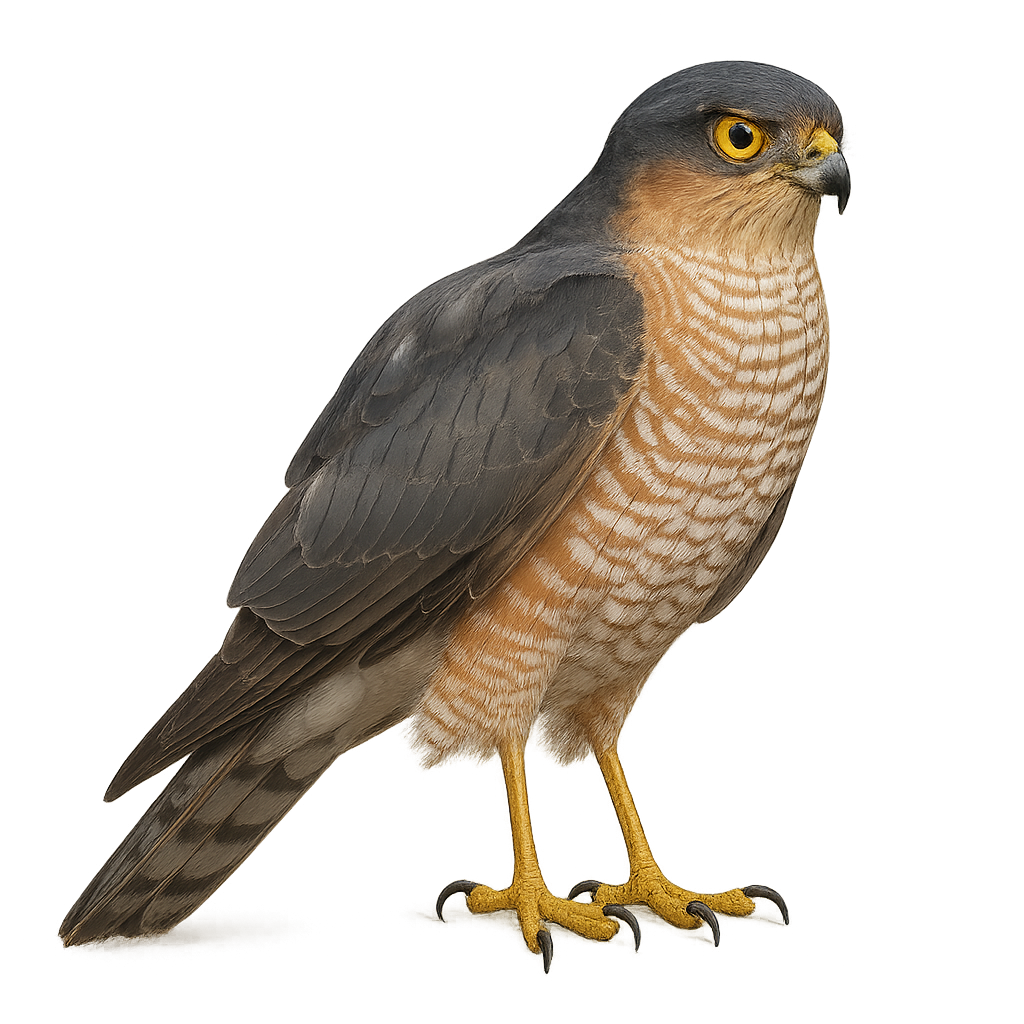
The European Sparrowhawk is a small raptor from the Accipitridae family, easily recognizable by its gray-brown plumage and narrow wings adapted for hunting in forests. It measures about 30 to 40 cm in length, with a wingspan of 60 to 90 cm, and weighs between 150 and 250 g. The male is generally smaller than the female. Its plumage varies depending on sex and age, but adults have bluish-gray feathers on the back and brownish horizontal bars on the belly. The European Sparrowhawk primarily inhabits dense forests and wooded areas in Europe, but it can also be found in urban parks and gardens. This raptor is an excellent hunter, primarily feeding on smaller birds, which it captures in flight after a rapid pursuit through trees. It often hunts using a silent, swift flight technique and is capable of capturing prey in confined spaces. Although the European Sparrowhawk is currently listed as of least concern, it faces threats such as habitat loss, disturbance of its nesting sites, and persecution by humans.
The Cooper's Hawk is a medium-sized raptor known for its sleek body and rounded wings. Its plumage is mostly bluish-gray on the back with reddish barring on the underparts. Adults have striking red eyes, while juveniles have yellow eyes. This agile predator is often seen flying through dense forests or hunting in urban areas. It primarily feeds on birds and small mammals. Its adaptability to various environments makes it a resilient bird, although habitat destruction poses a potential threat.
The Frances's Sparrowhawk, or Accipiter francesiae, is a small raptor endemic to Madagascar. This agile predator is recognizable by its slender silhouette and short, rounded wings, ideal for maneuvering through dense forests. Its plumage is generally gray on top and white with brown streaks underneath, allowing it to blend into its environment. It primarily feeds on small birds, insects, and occasionally small mammals. The Frances's Sparrowhawk is a discreet bird, often difficult to observe due to its shy behavior. It plays a crucial role in controlling the populations of its prey, thus contributing to the ecological balance of its habitat.
The Crimson Chat is a small bird primarily found in Australia, easily identifiable by its striking plumage of red, black, and white hues. Males display a vivid red on their chest and forehead, while females are duller, with brownish tones. This bird is often seen in arid and semi-arid regions, feeding mainly on insects and nectar. Known for its adaptability to harsh environments, the Crimson Chat is a resilient species. It typically builds its nest in low shrubs, using materials like twigs and grasses.
The Buff-tailed Coronet, or Haplophaedia assimilis, is a fascinating small hummingbird known for its striking plumage and distinctive tail. This bird features predominantly green plumage with metallic sheens, while its tail is relatively long and slender, giving it its name. It is mainly found in the humid forests of the Andes, where it feeds on nectar and plays a crucial role in pollinating local plants. Its fast and agile flight allows it to move easily between flowers. Although discreet, it is often observed defending its territory against other hummingbirds. The Buff-tailed Coronet is a perfect example of hummingbird adaptation to mountainous environments.


